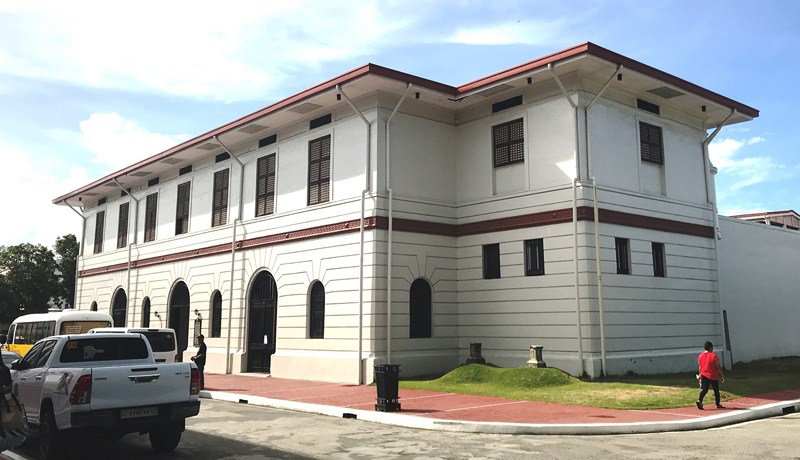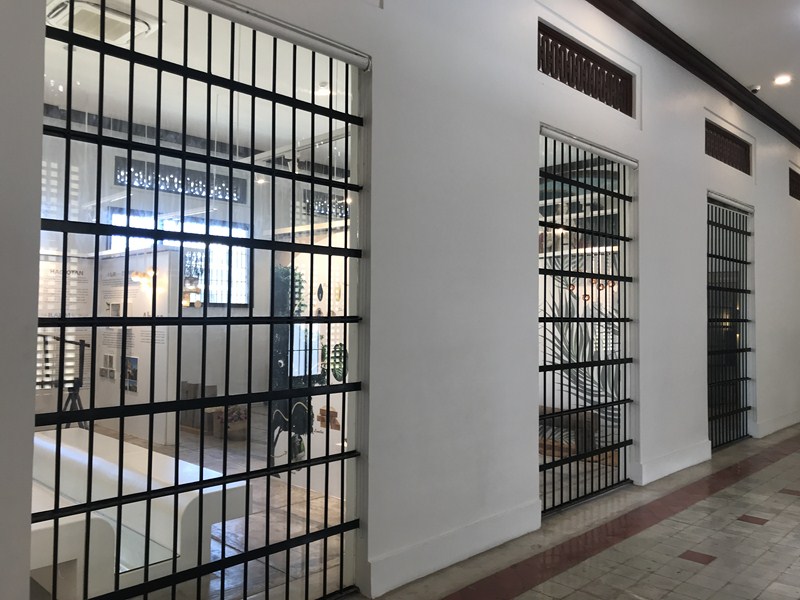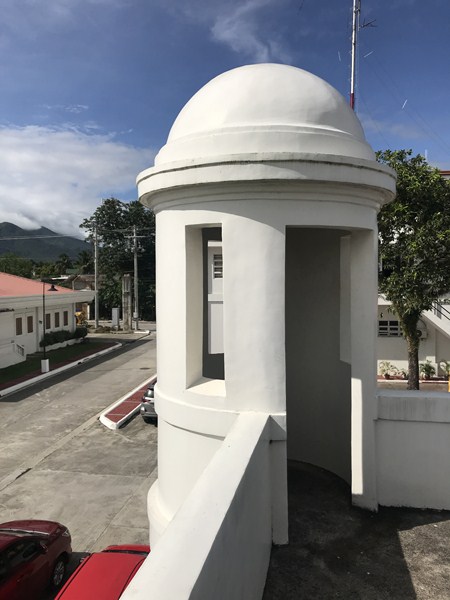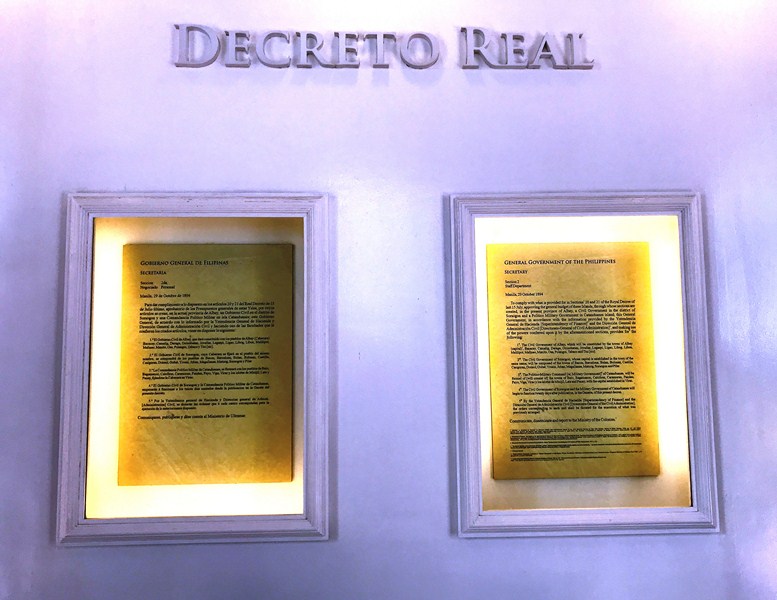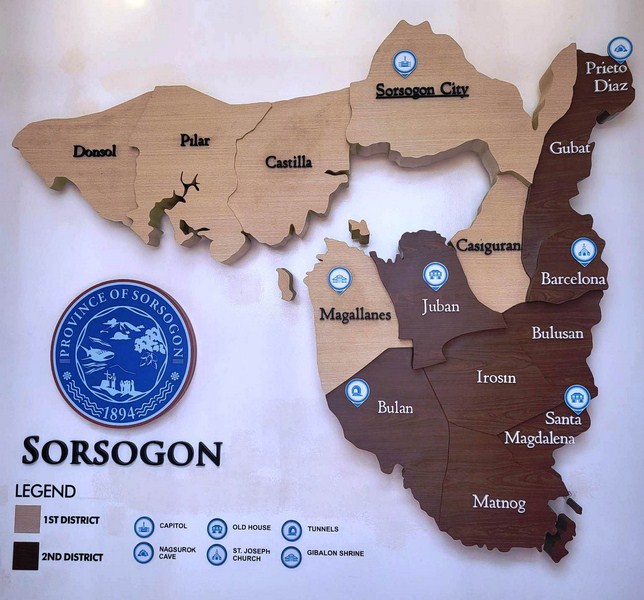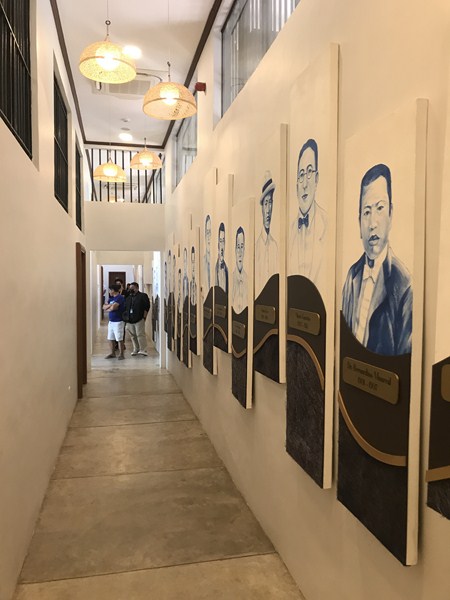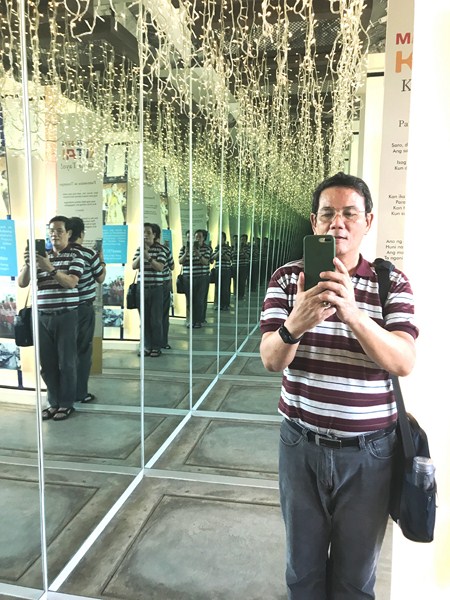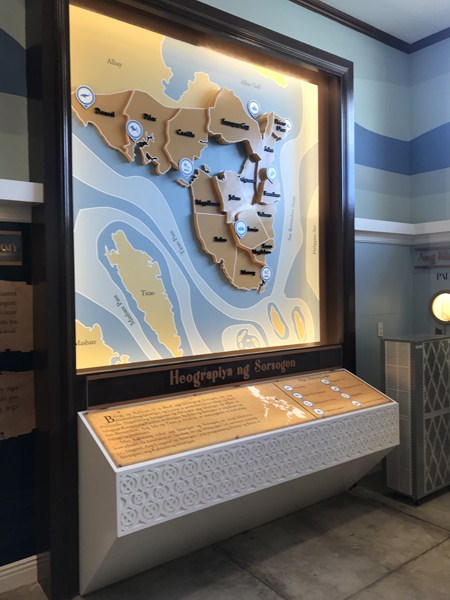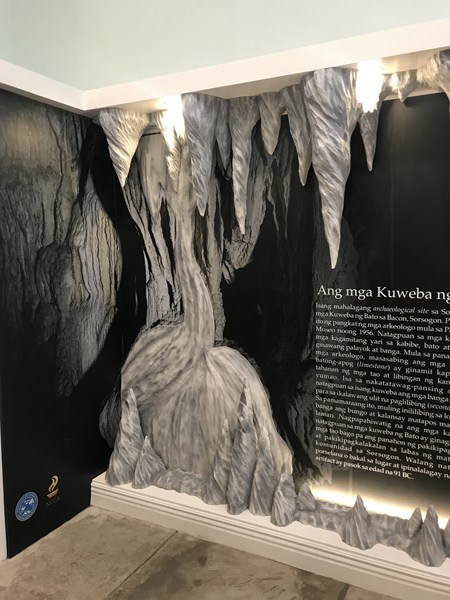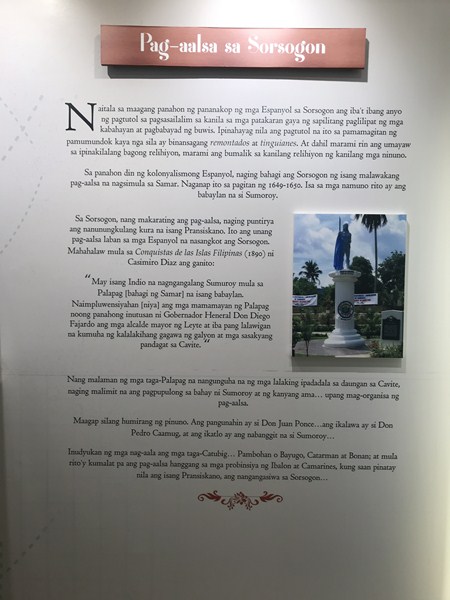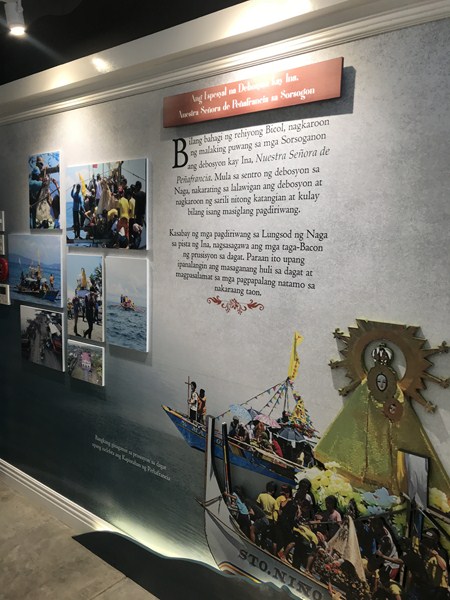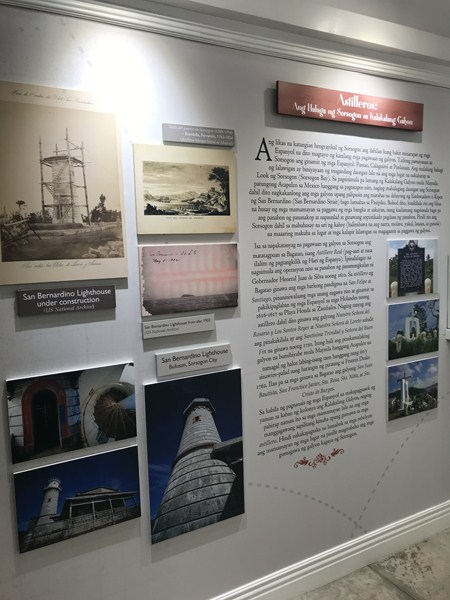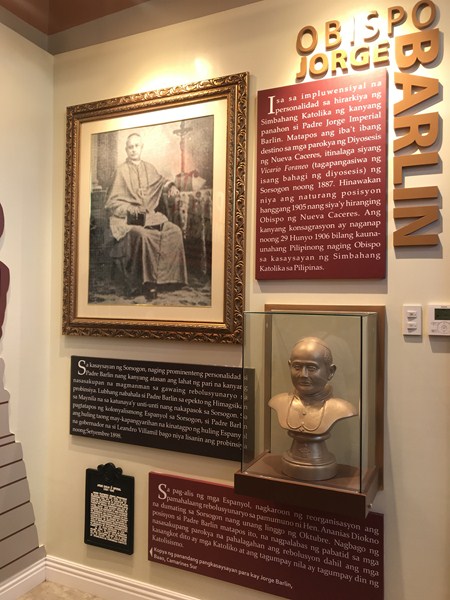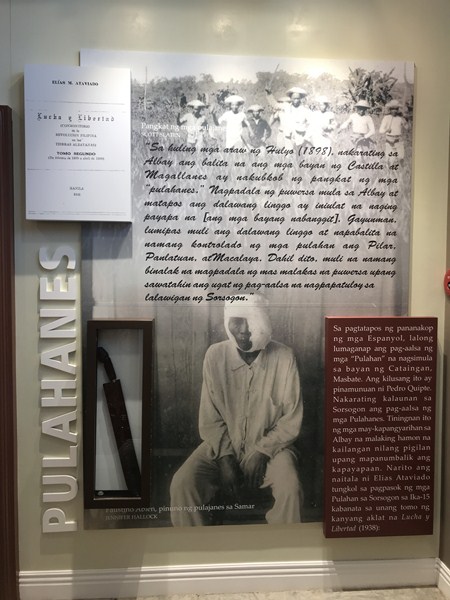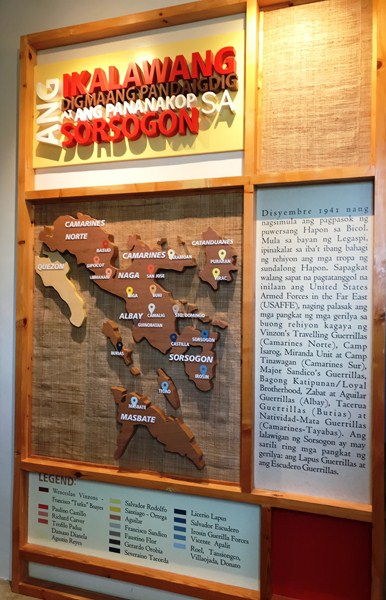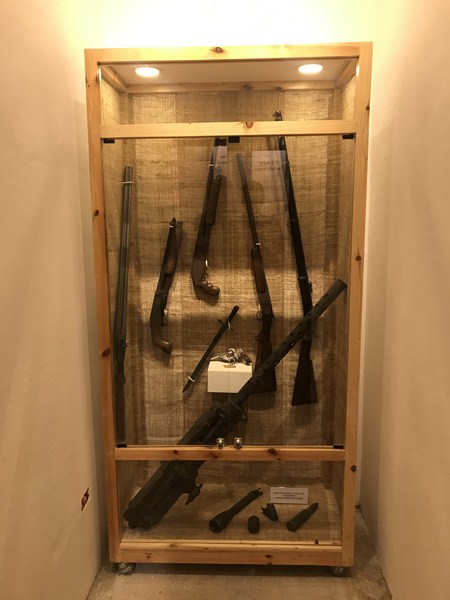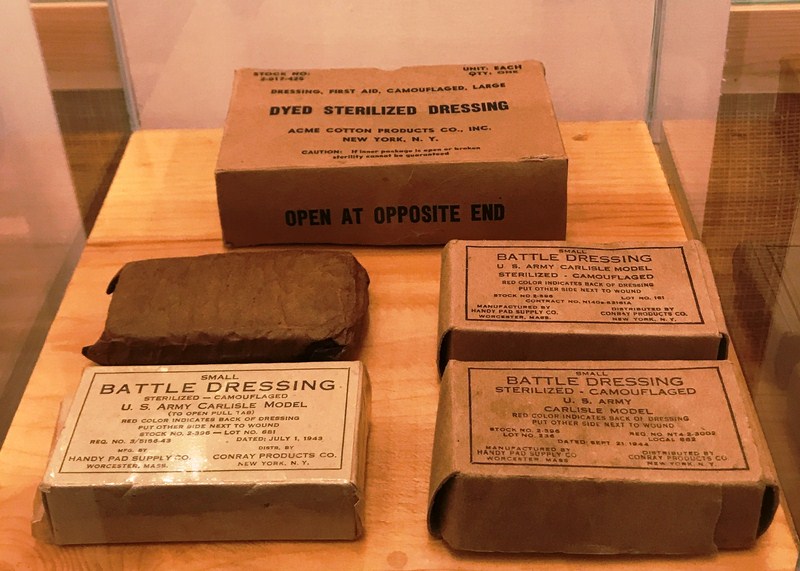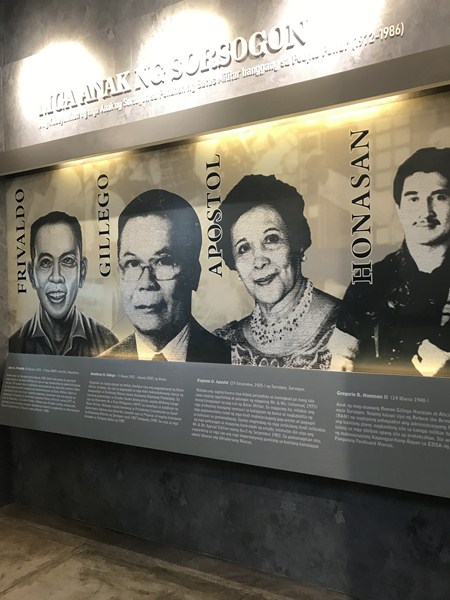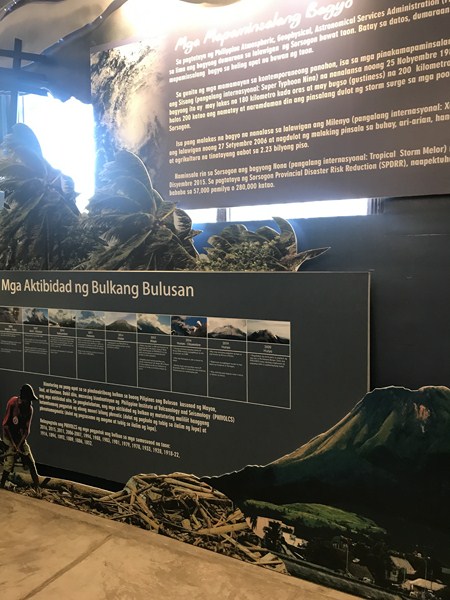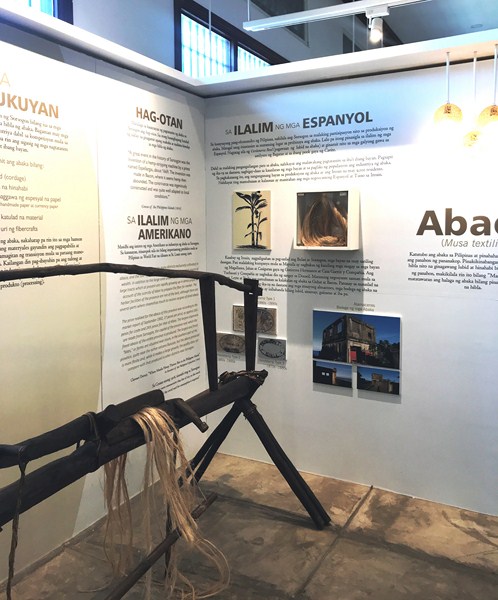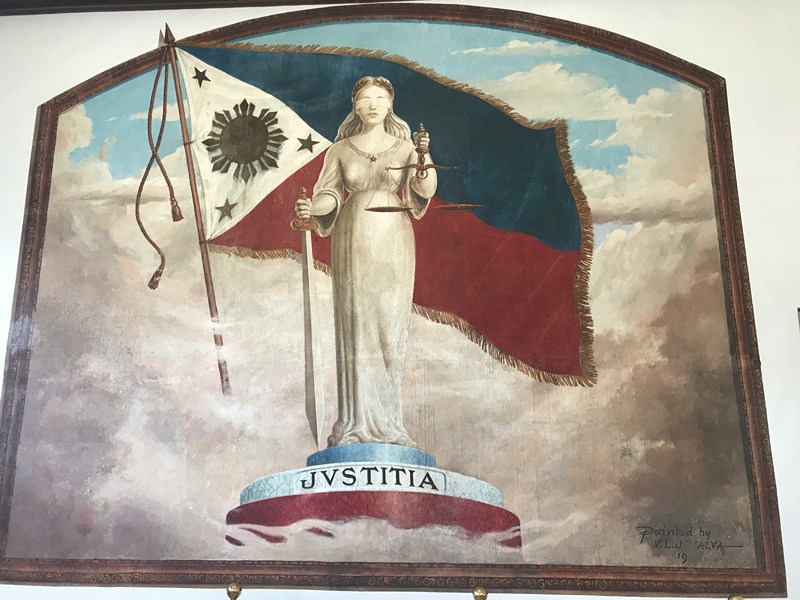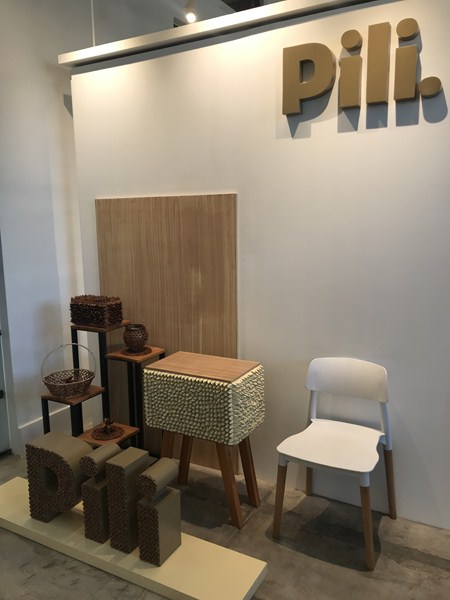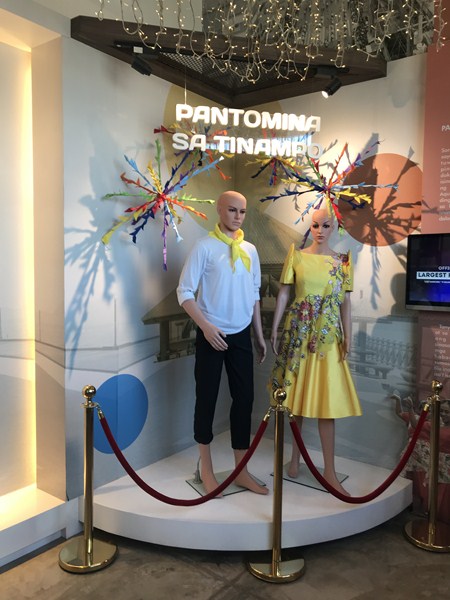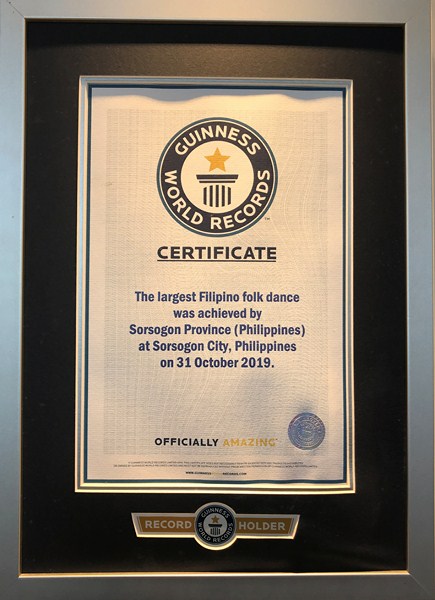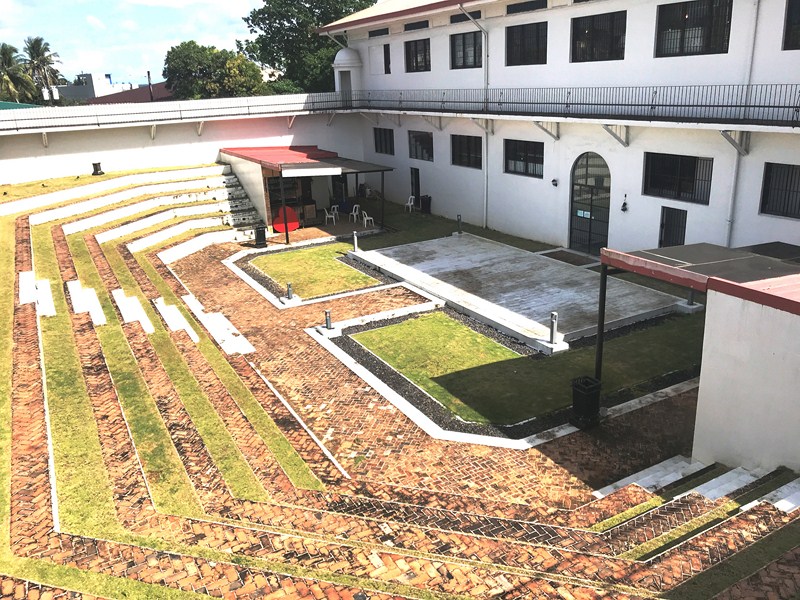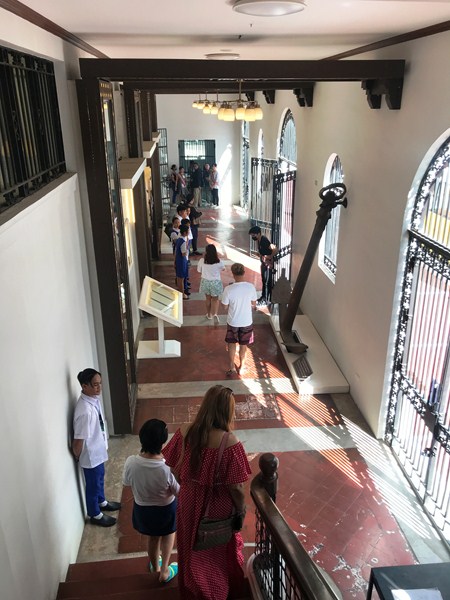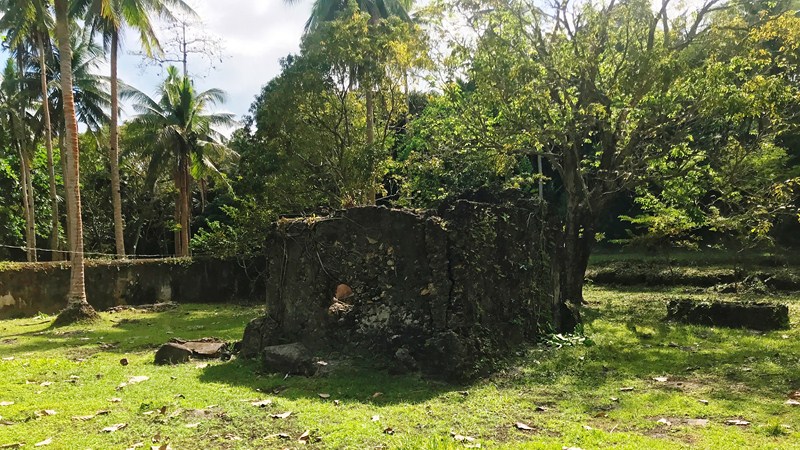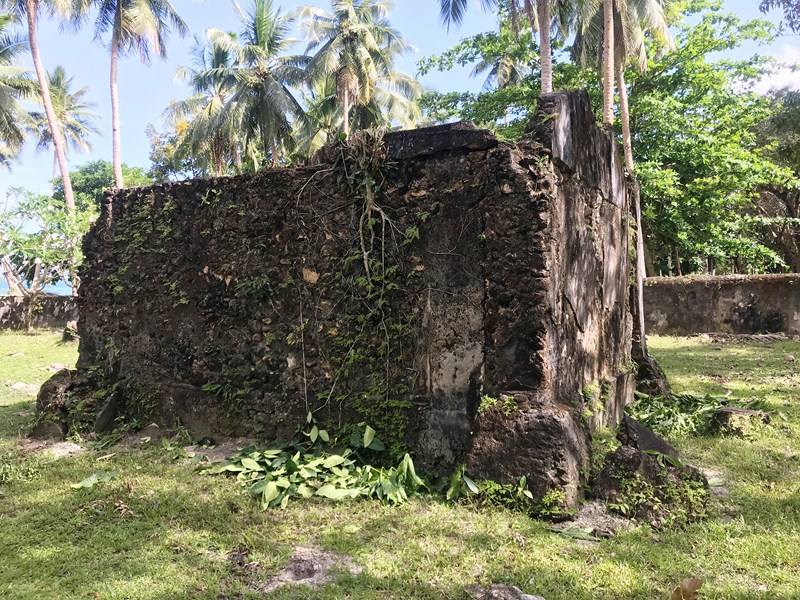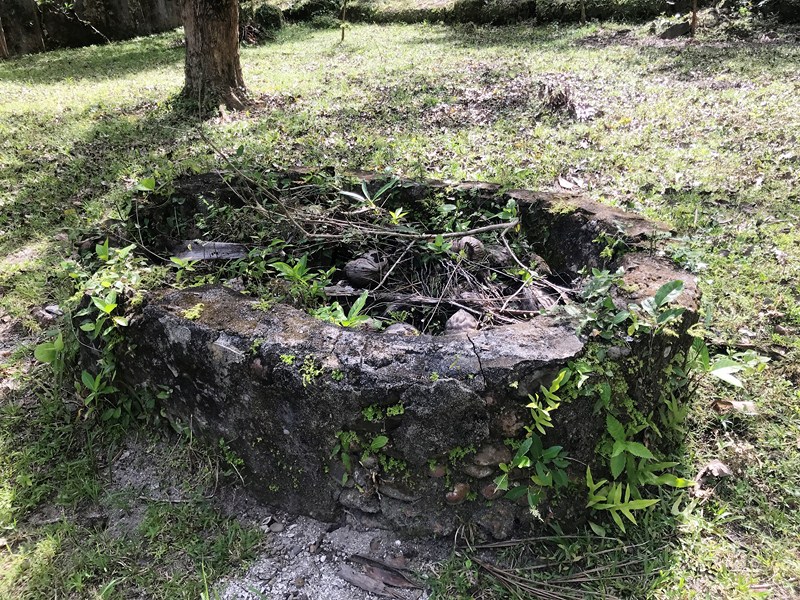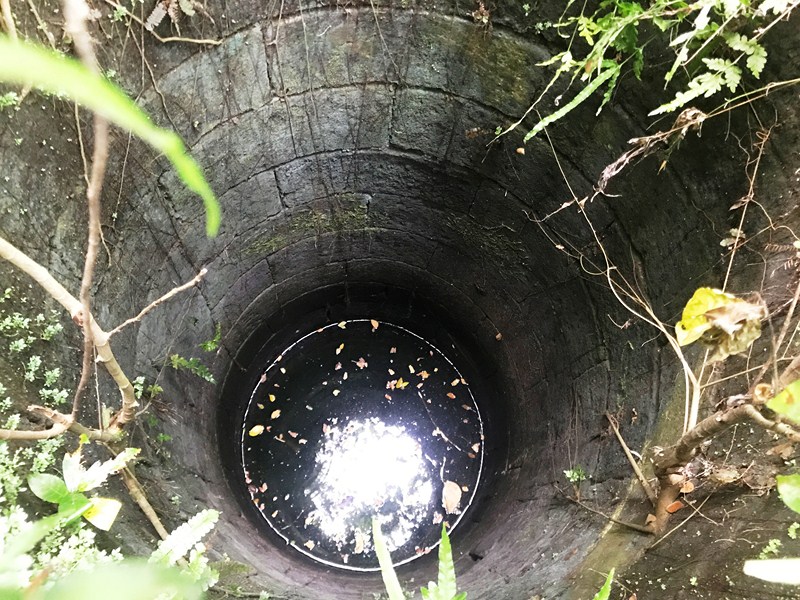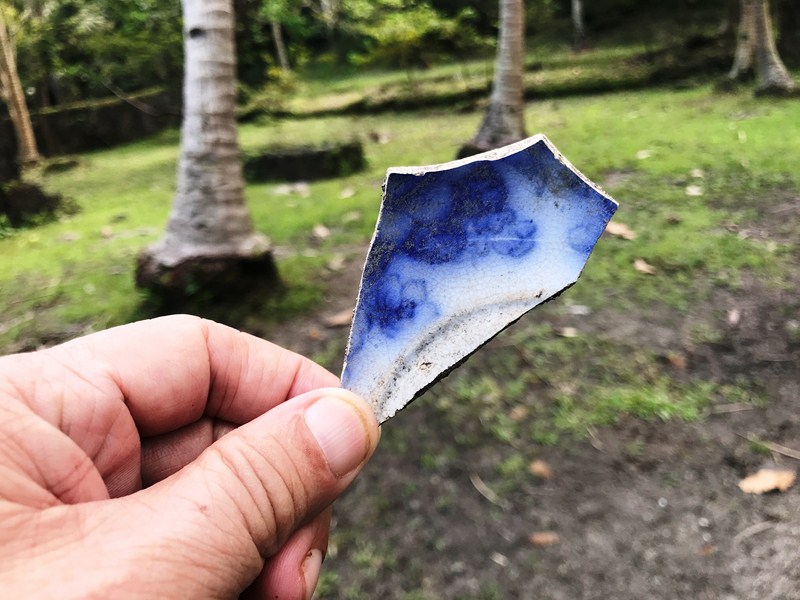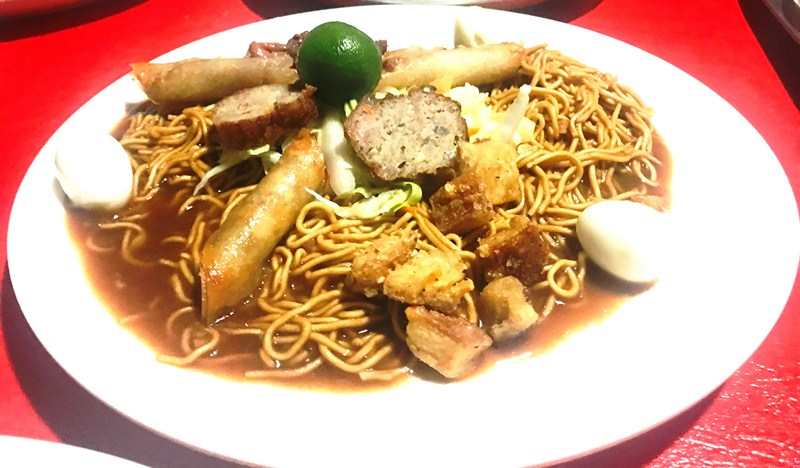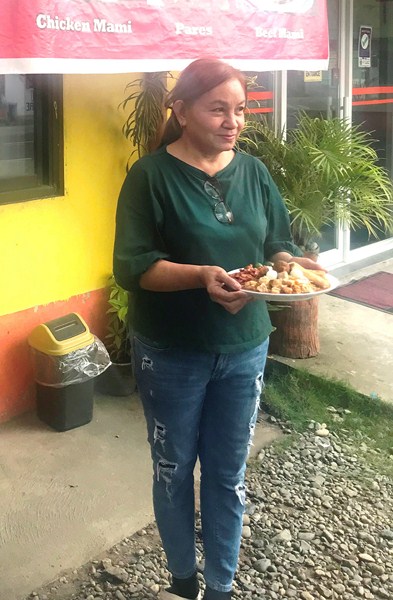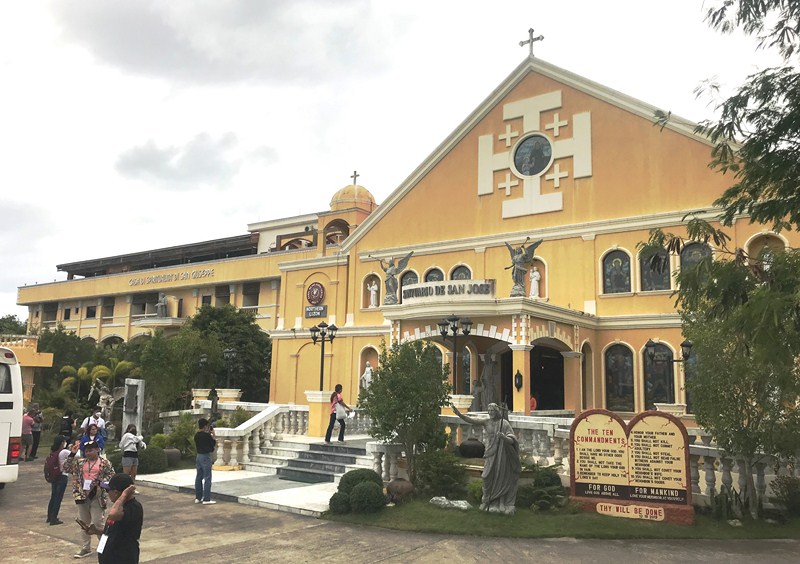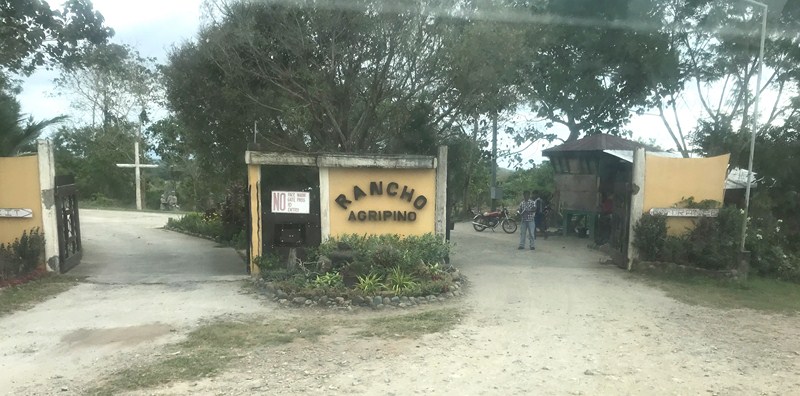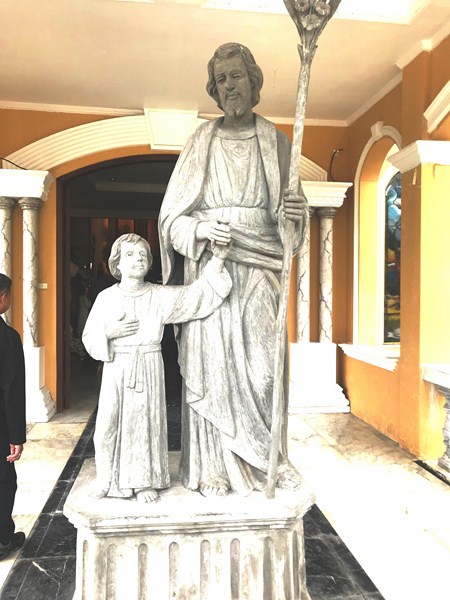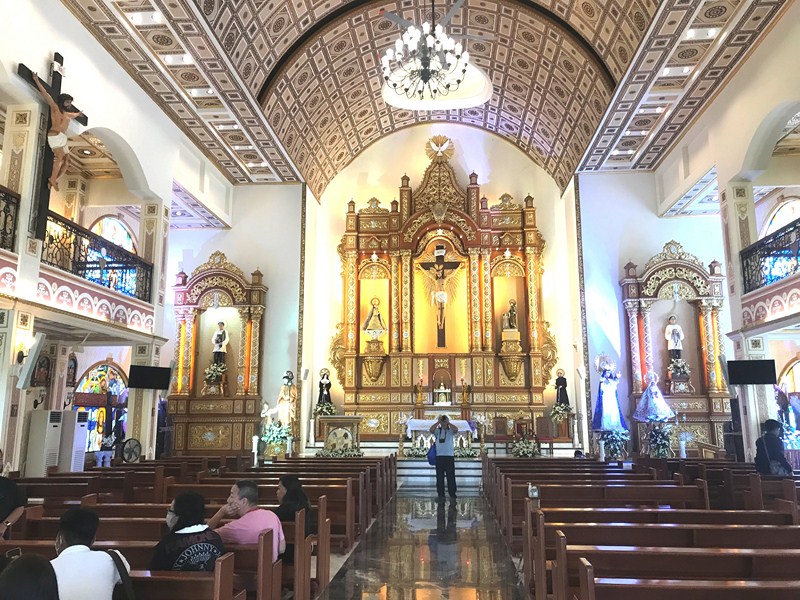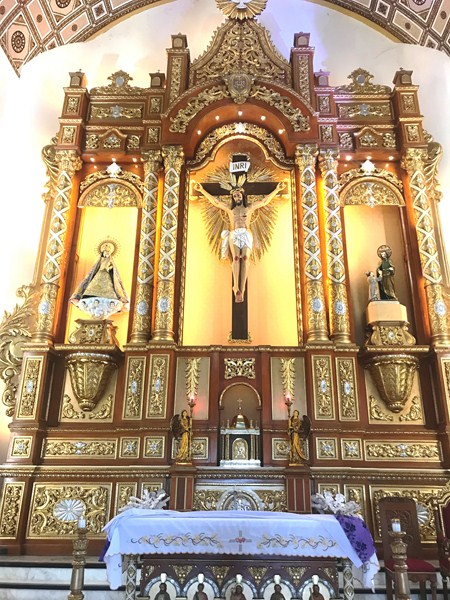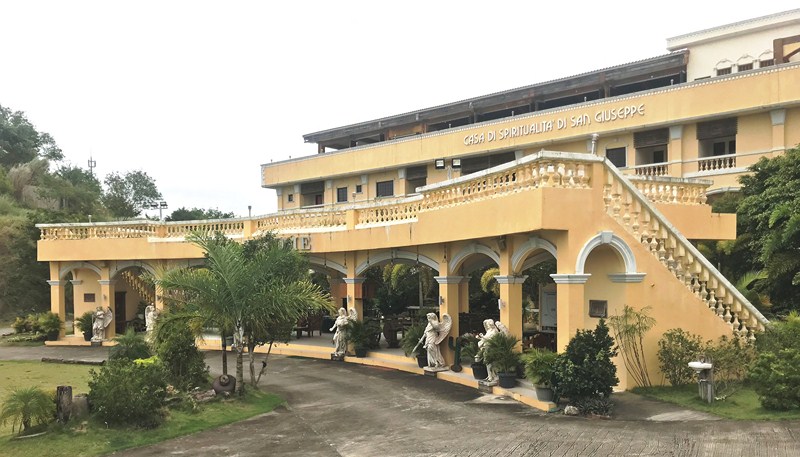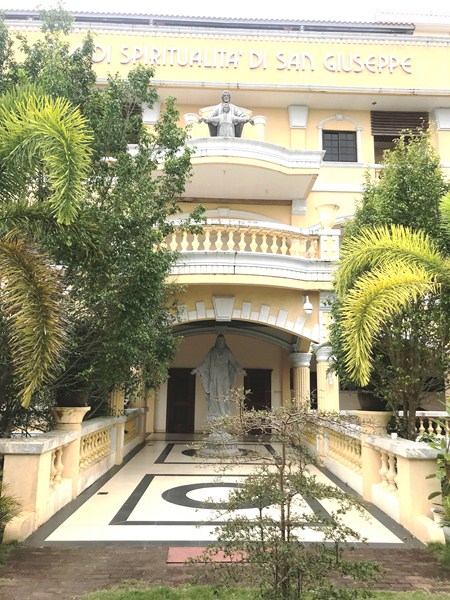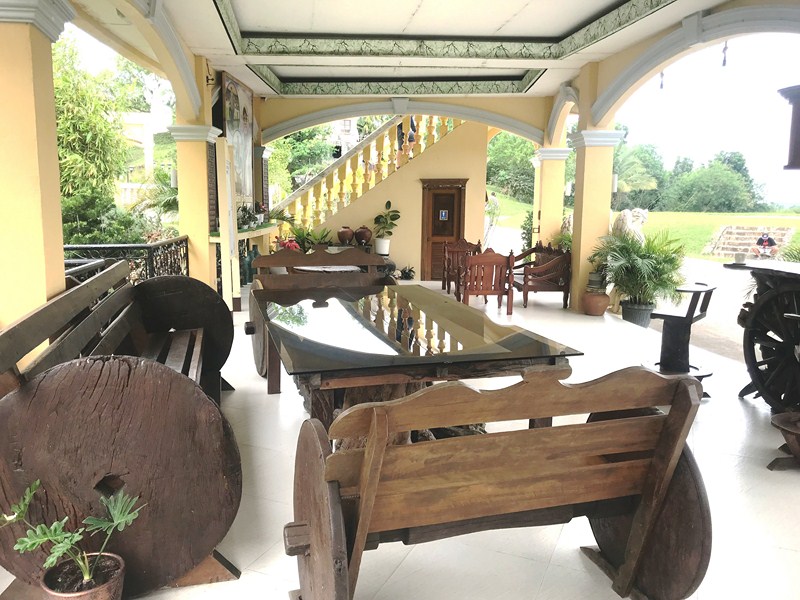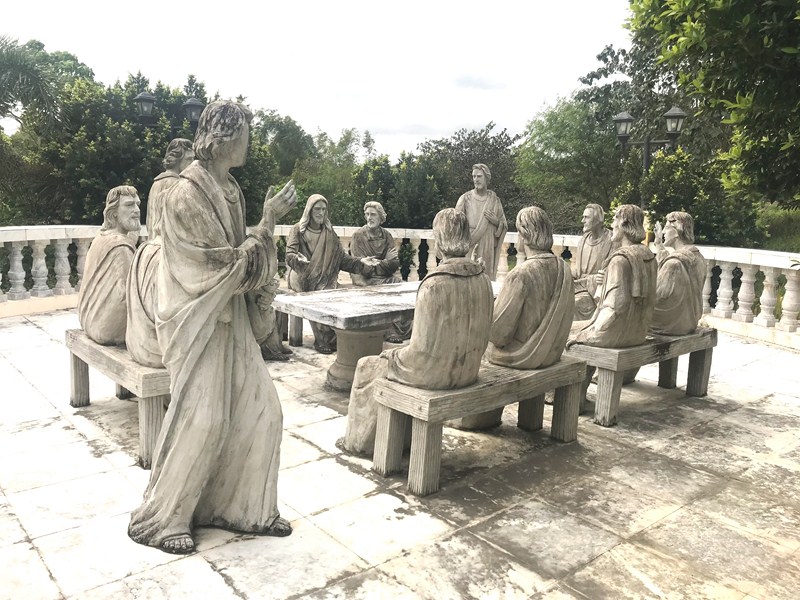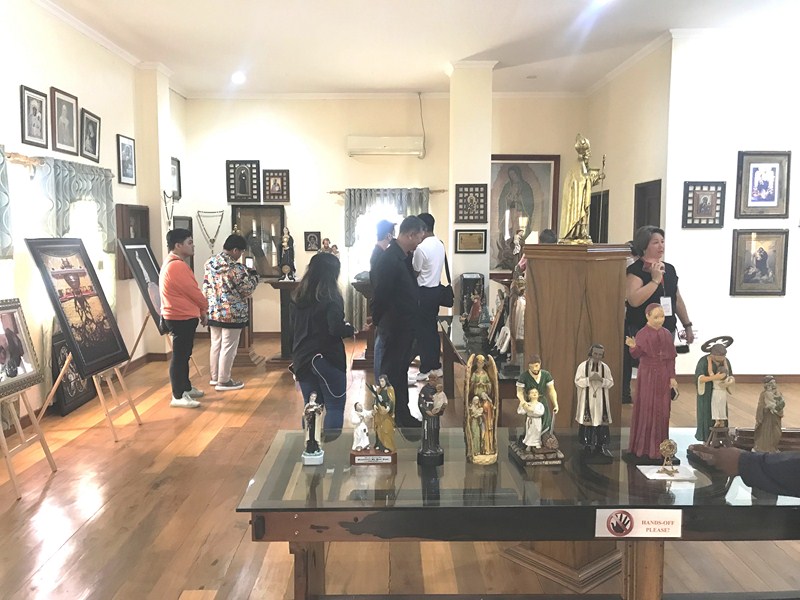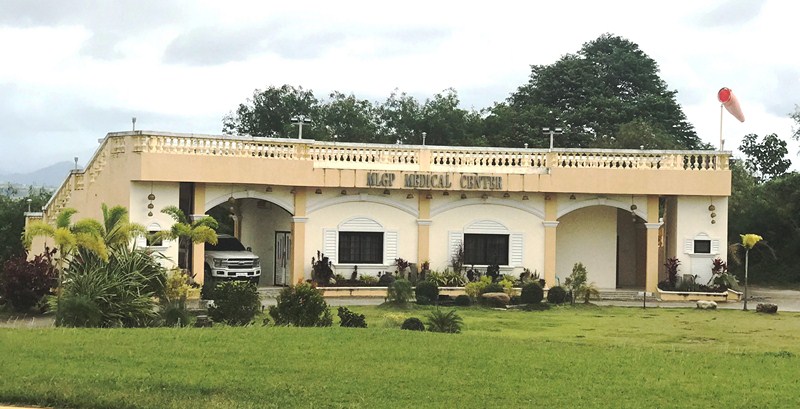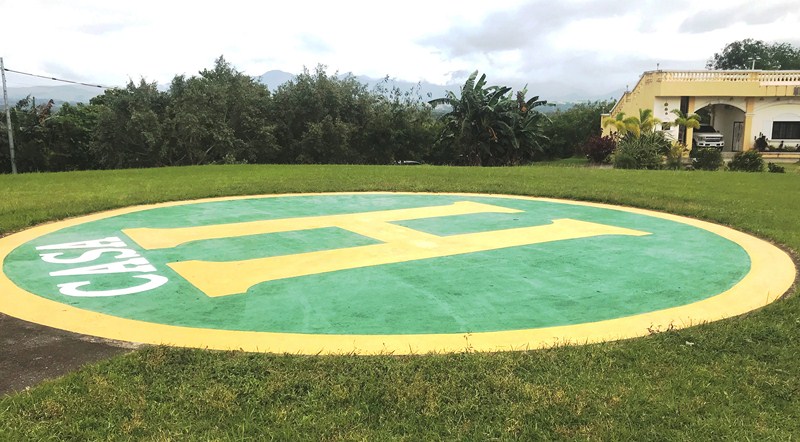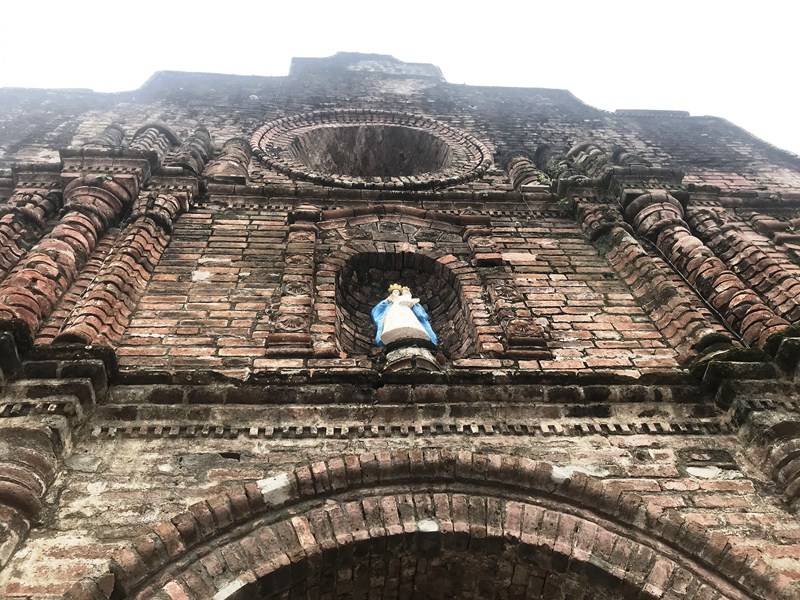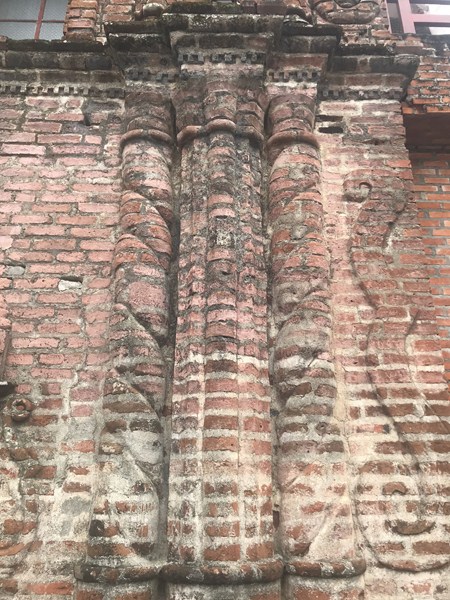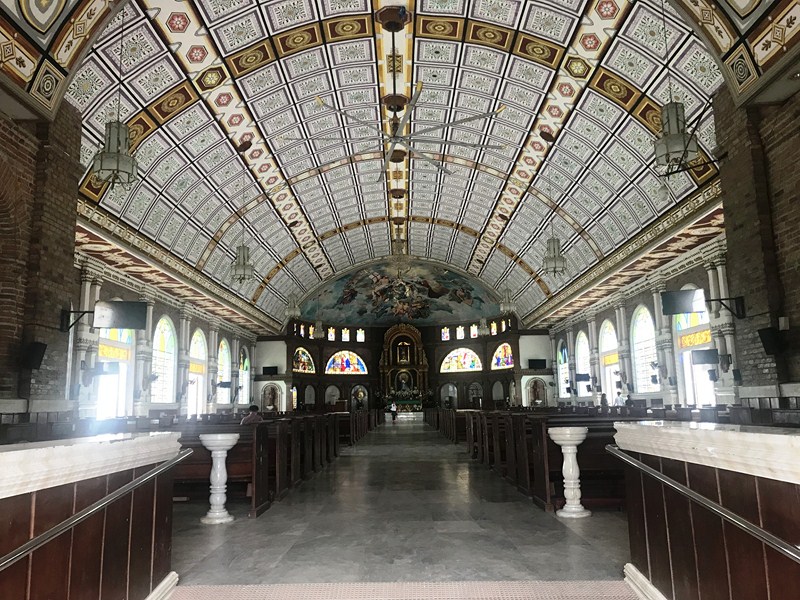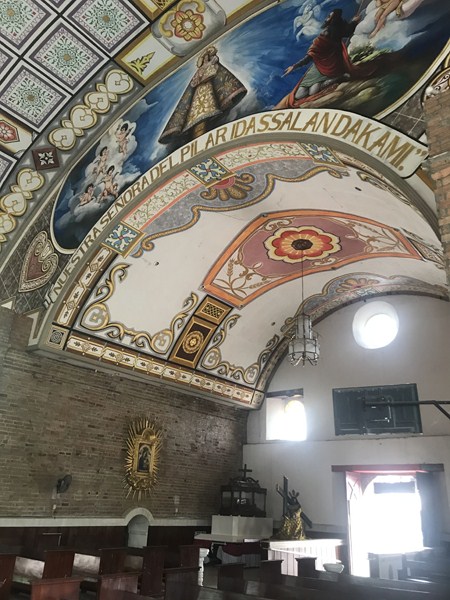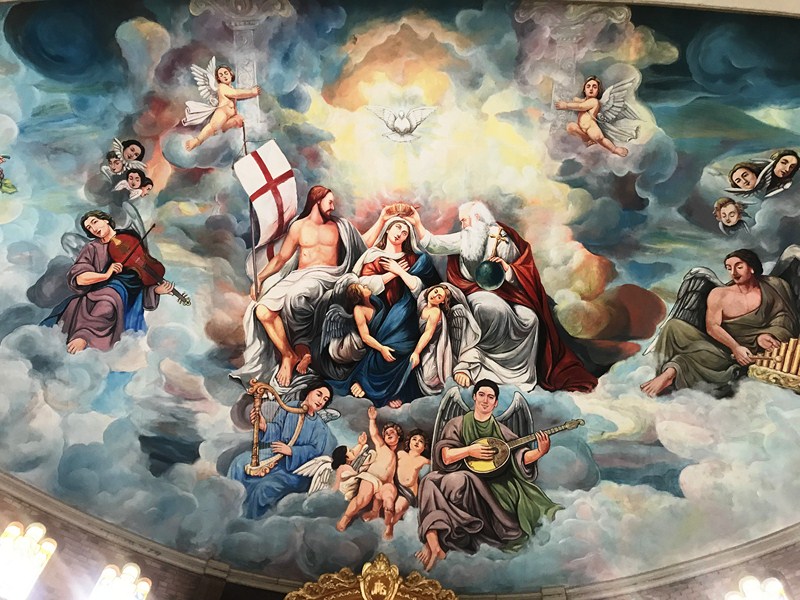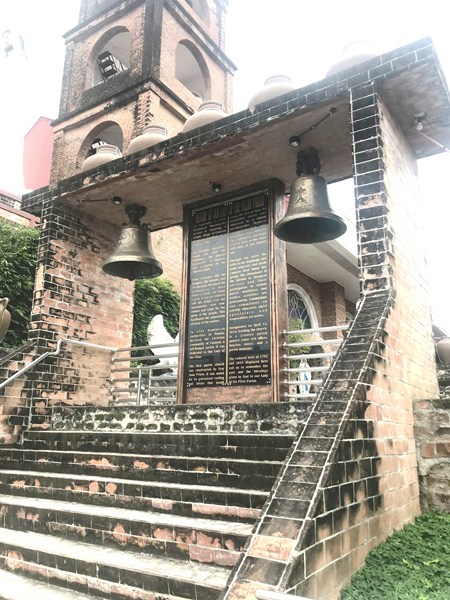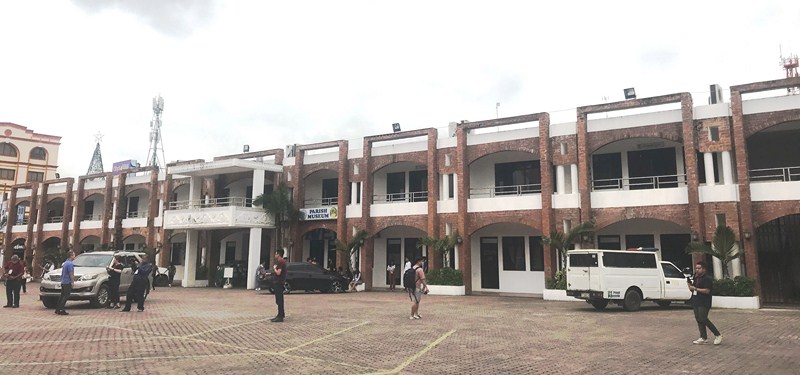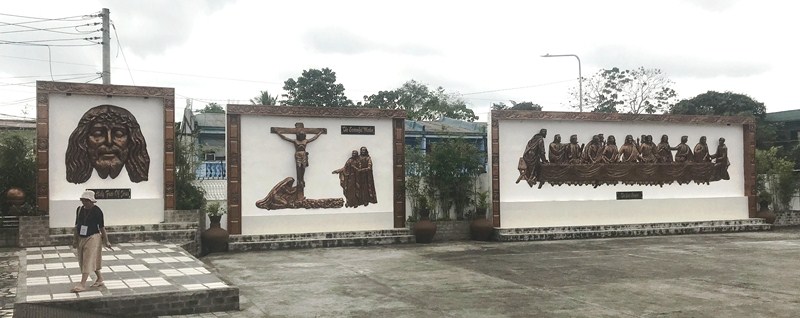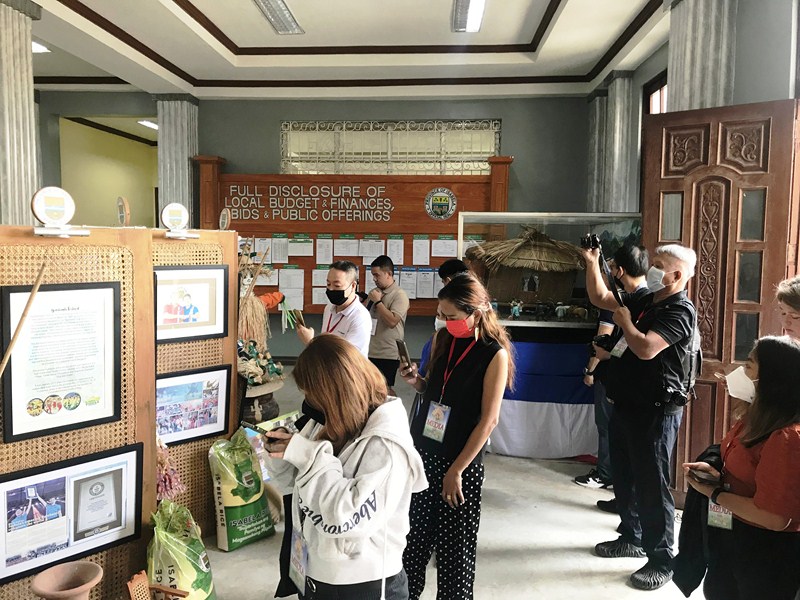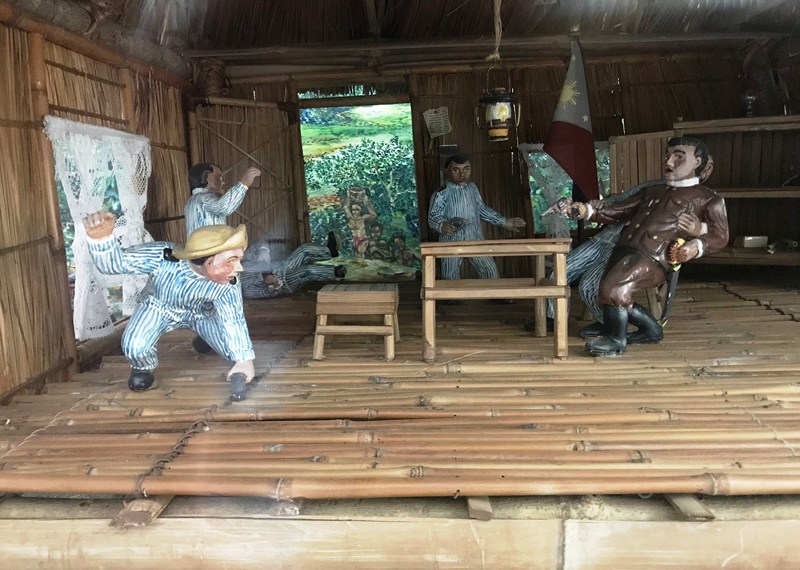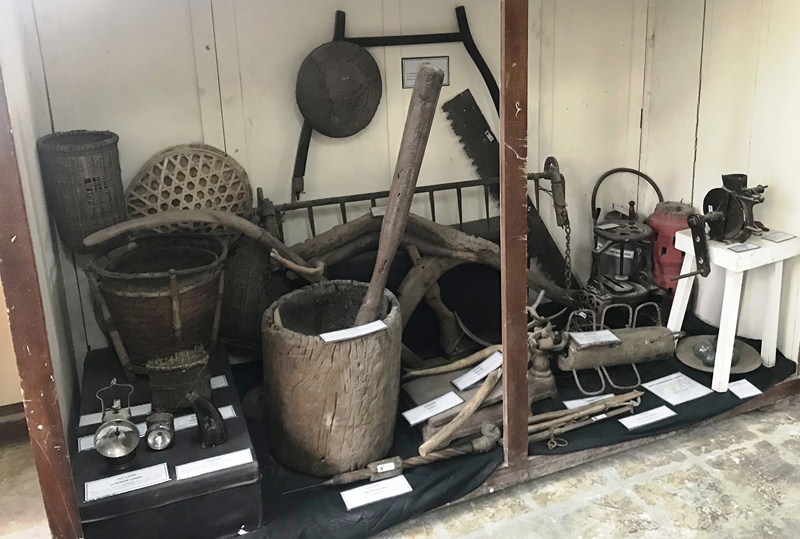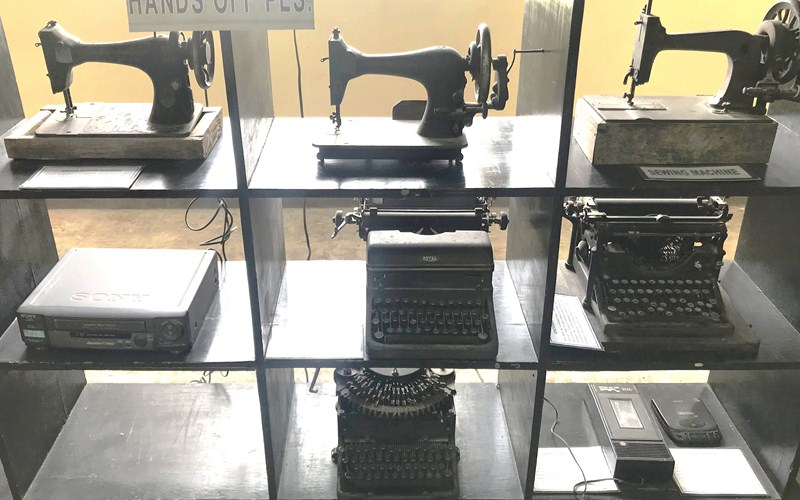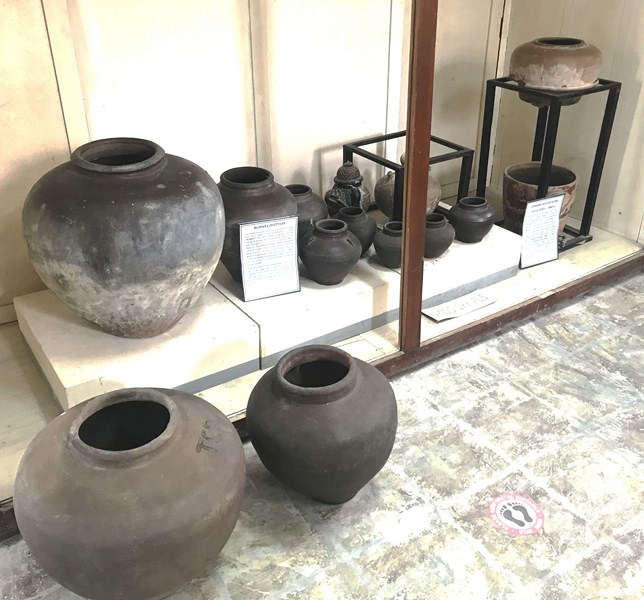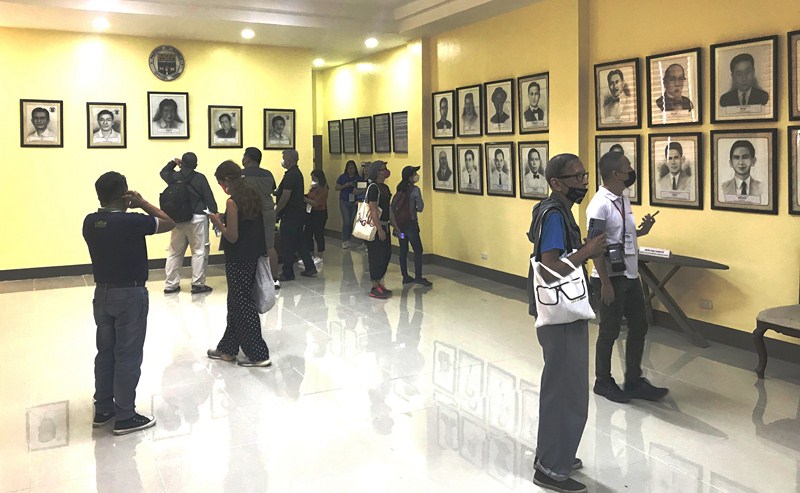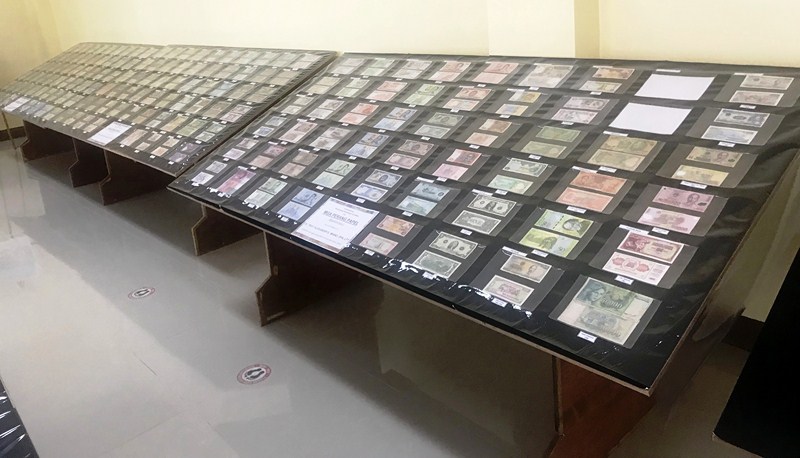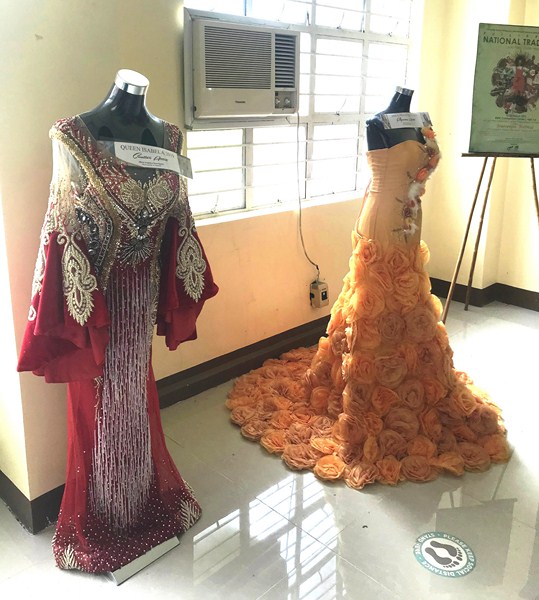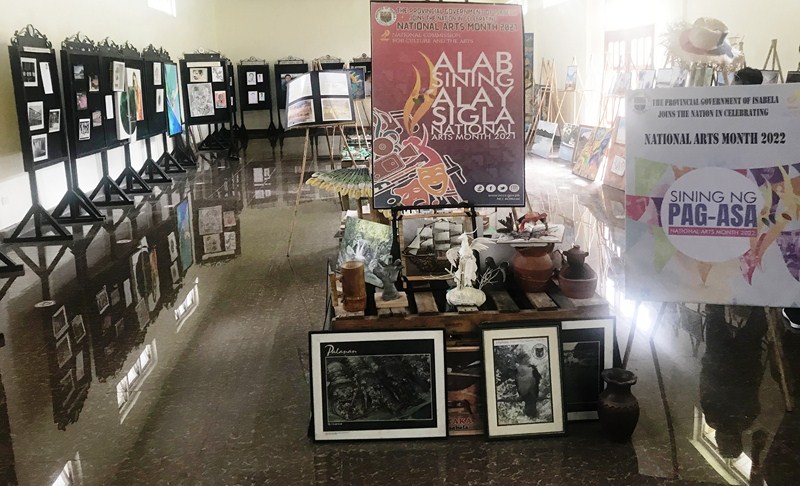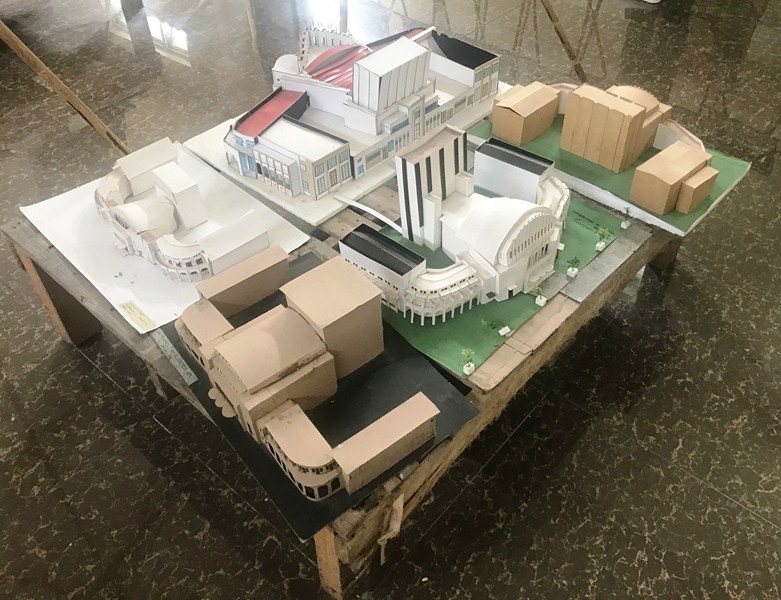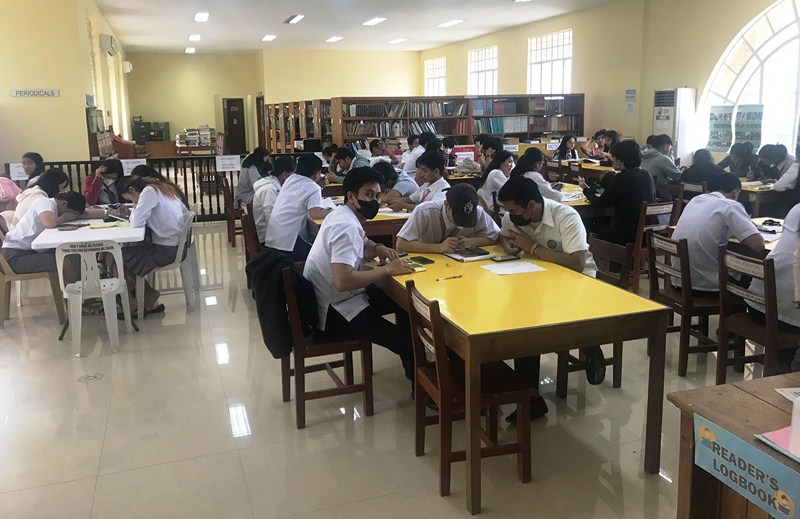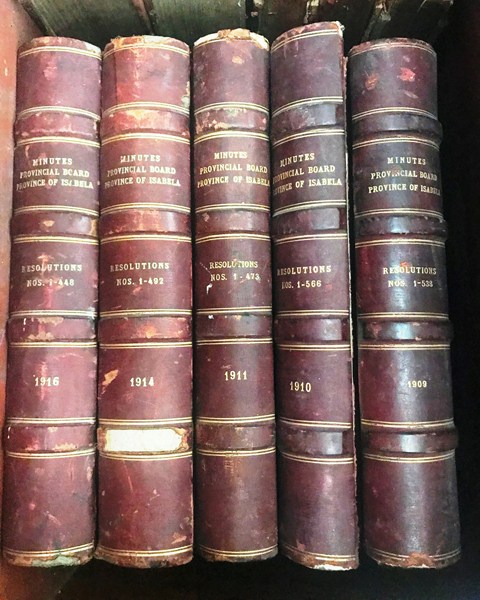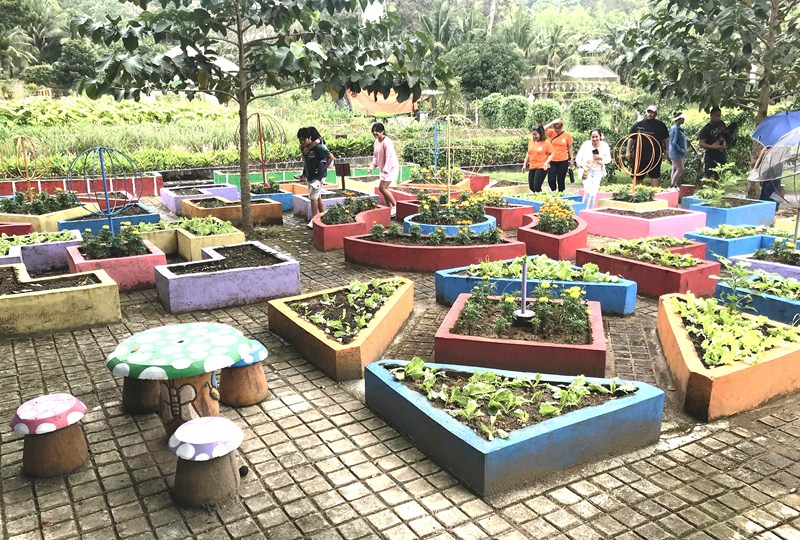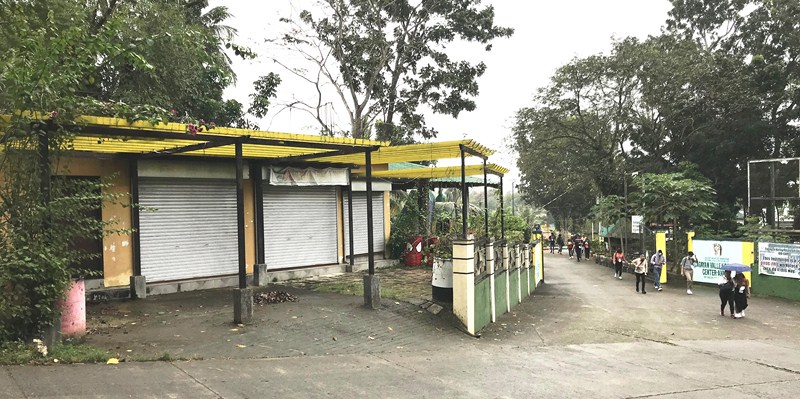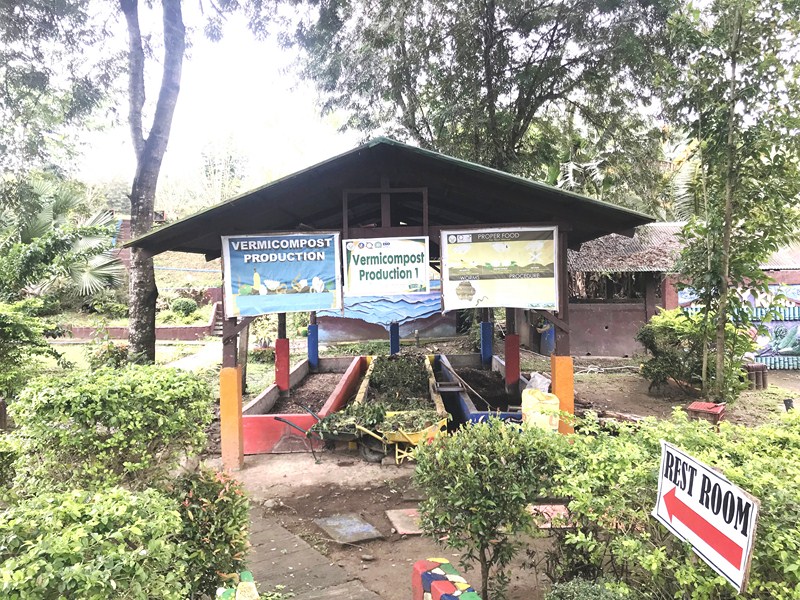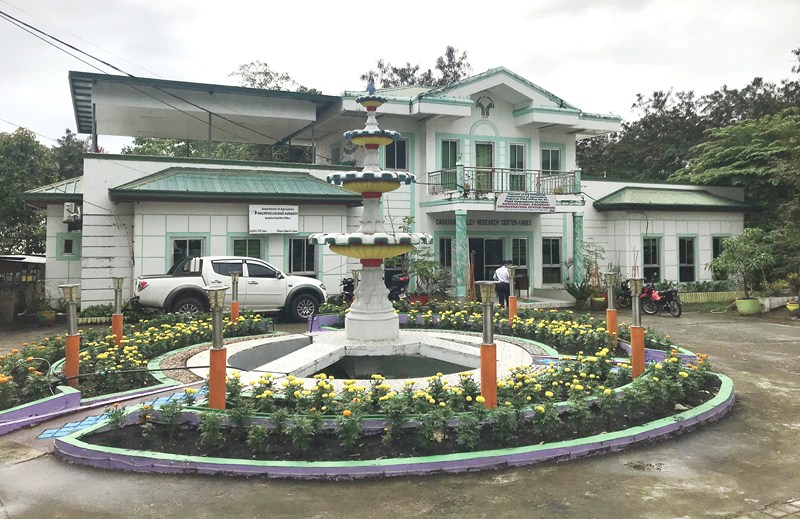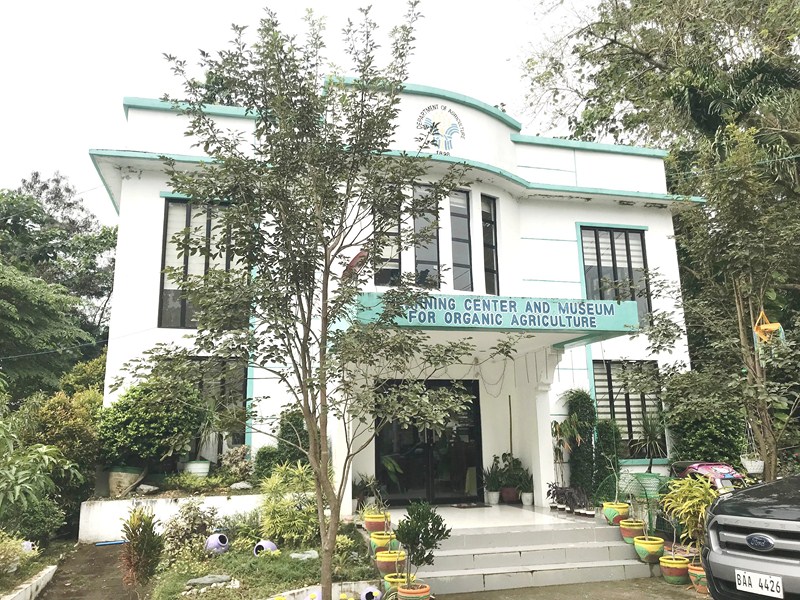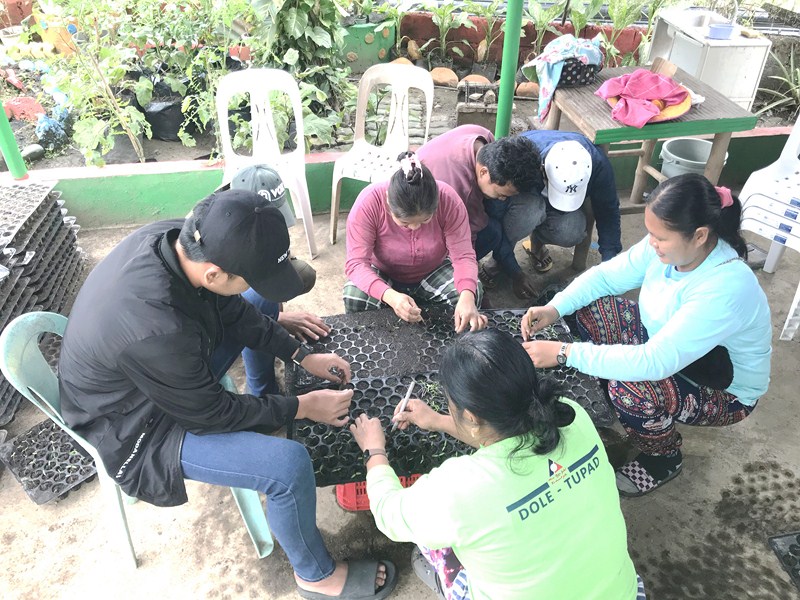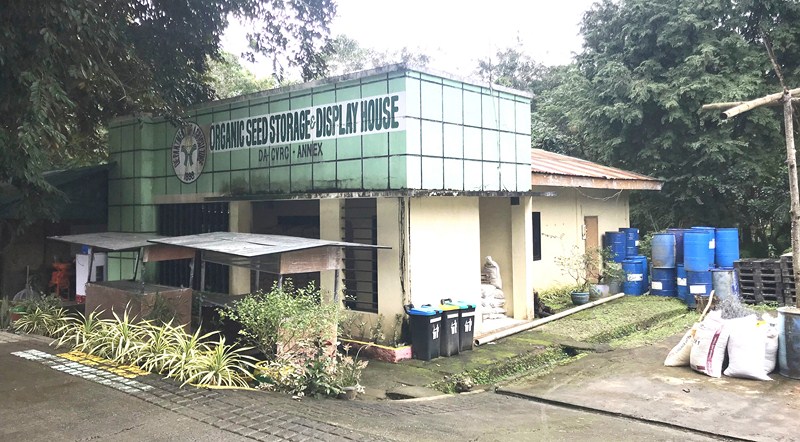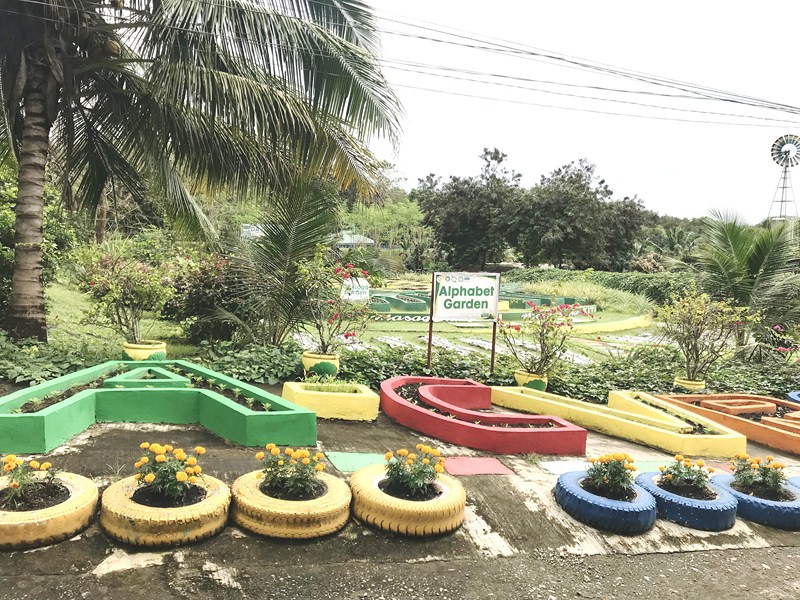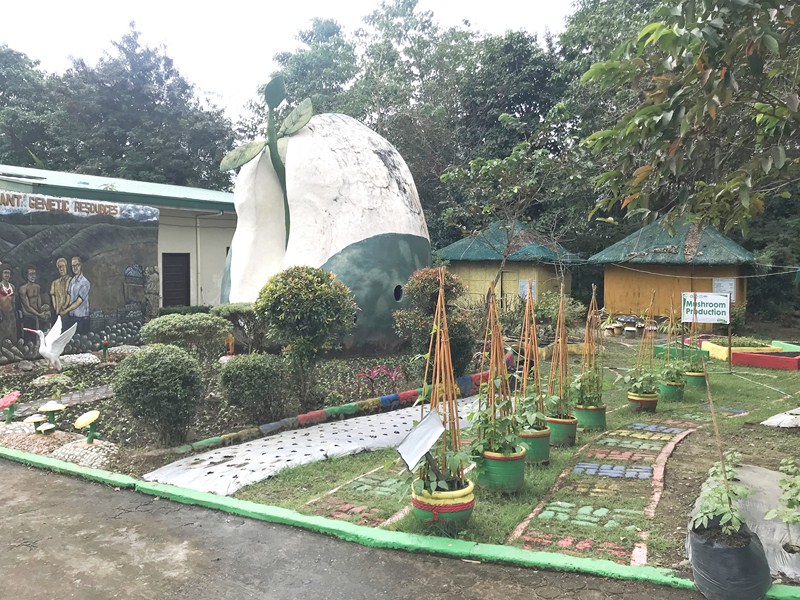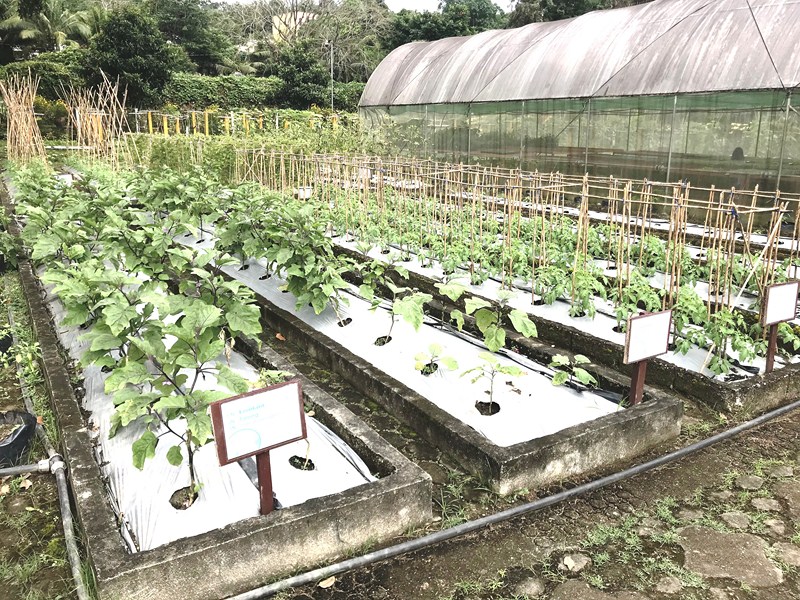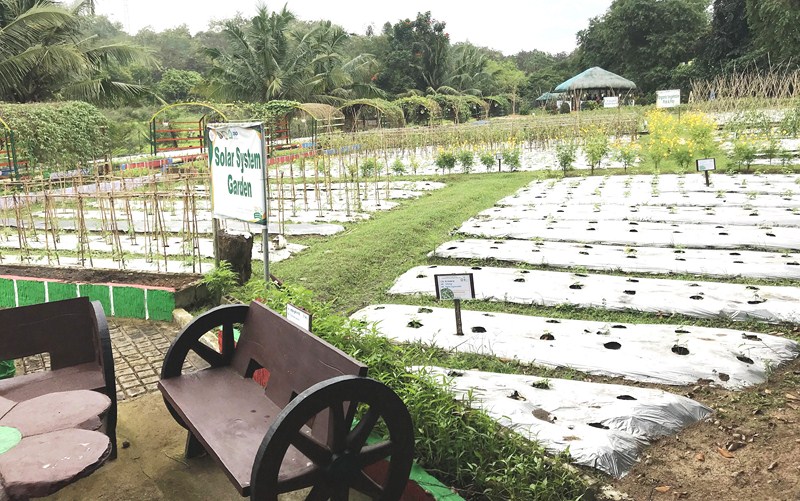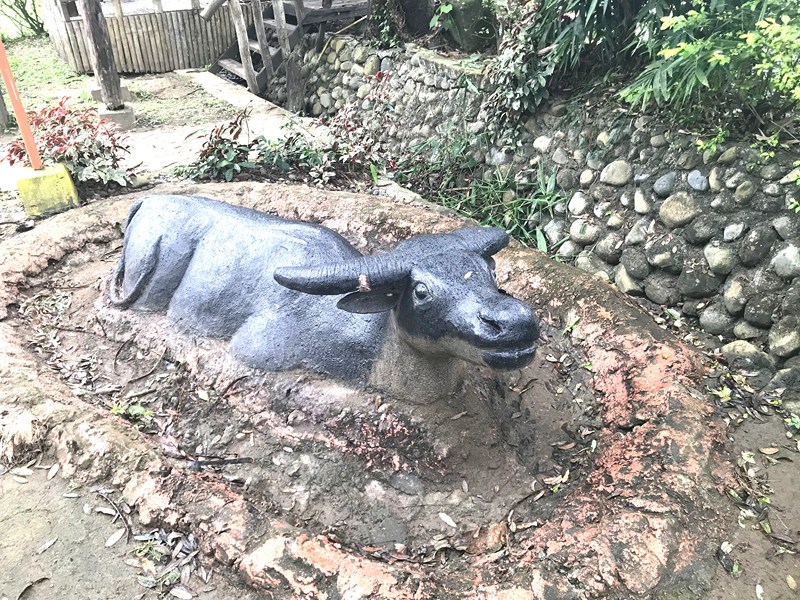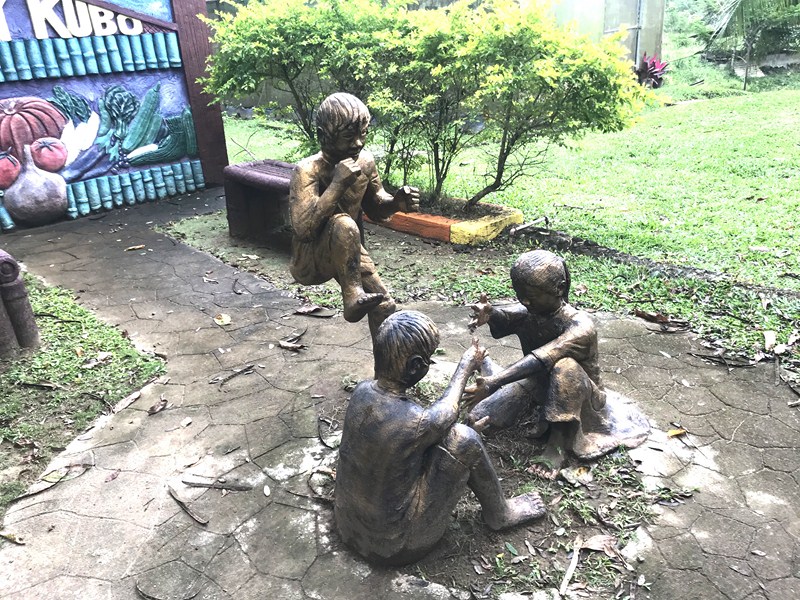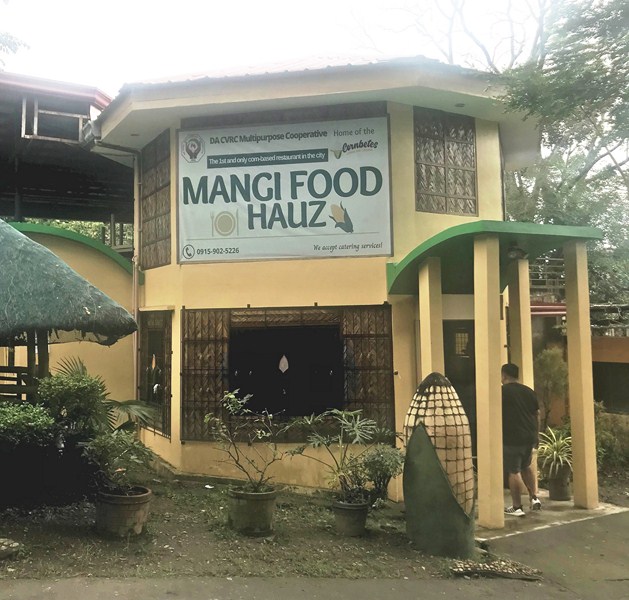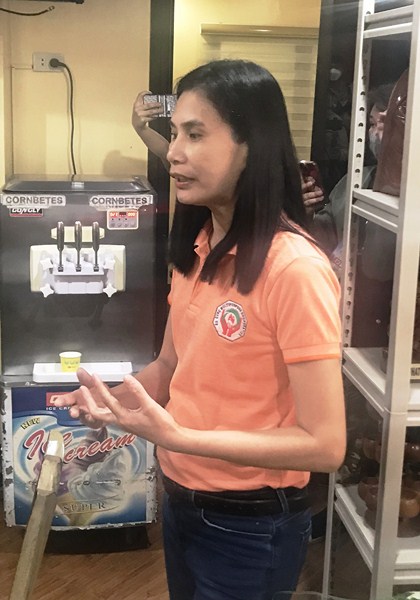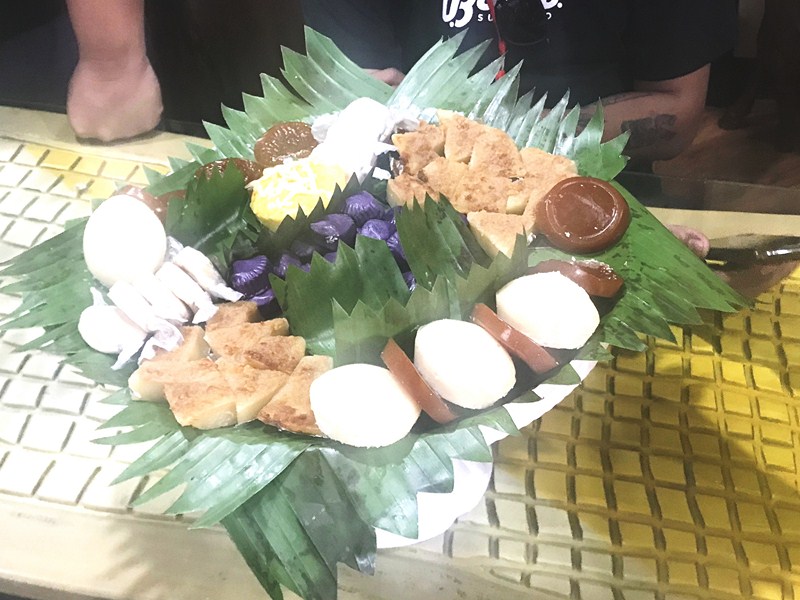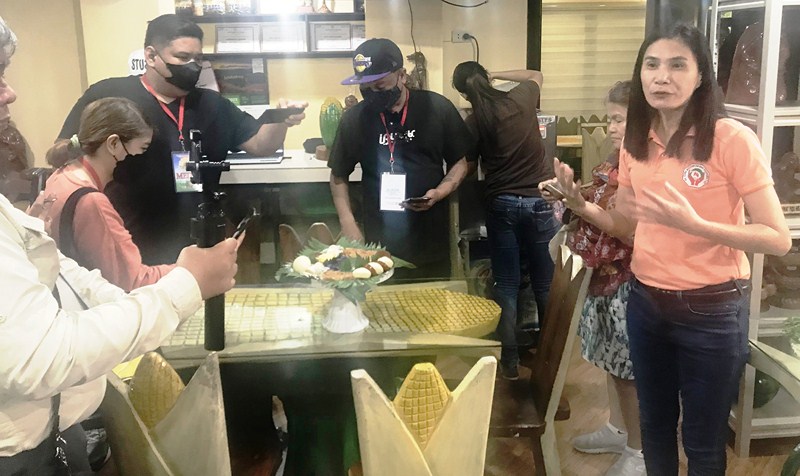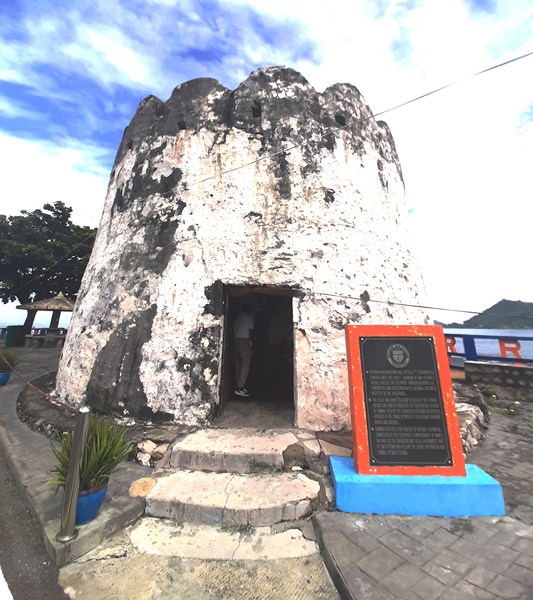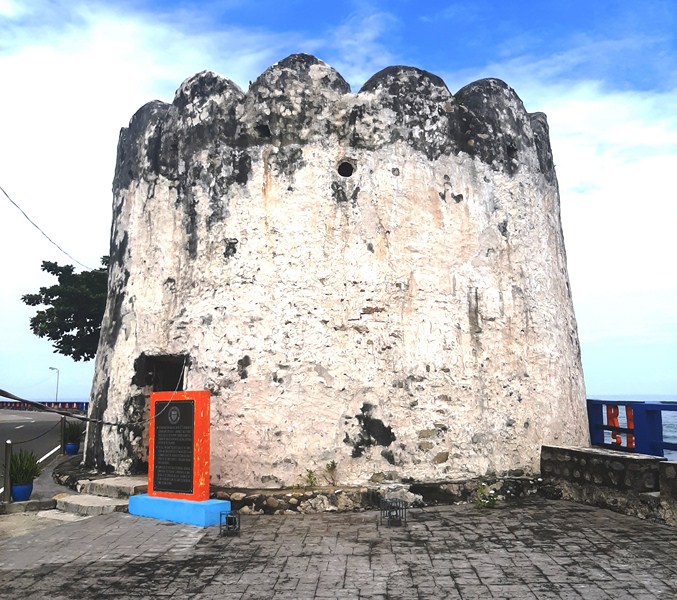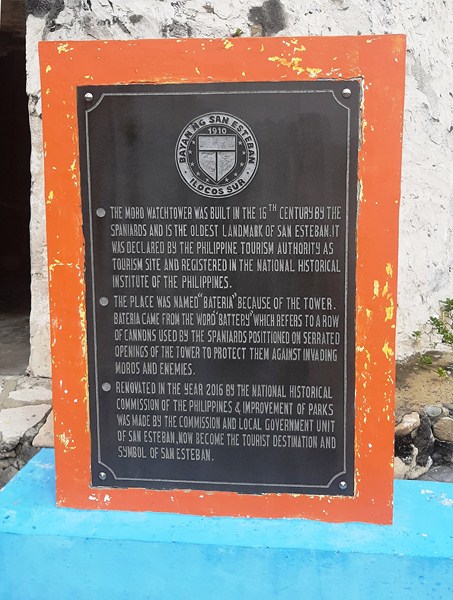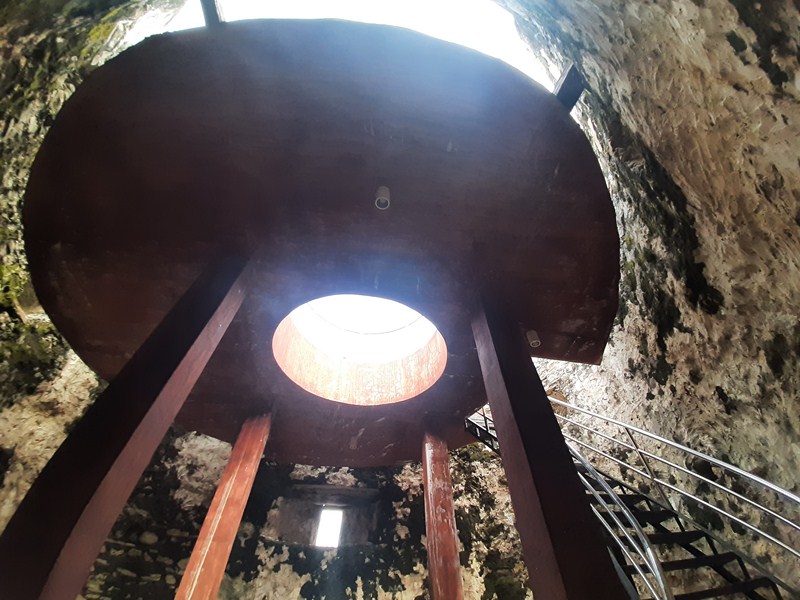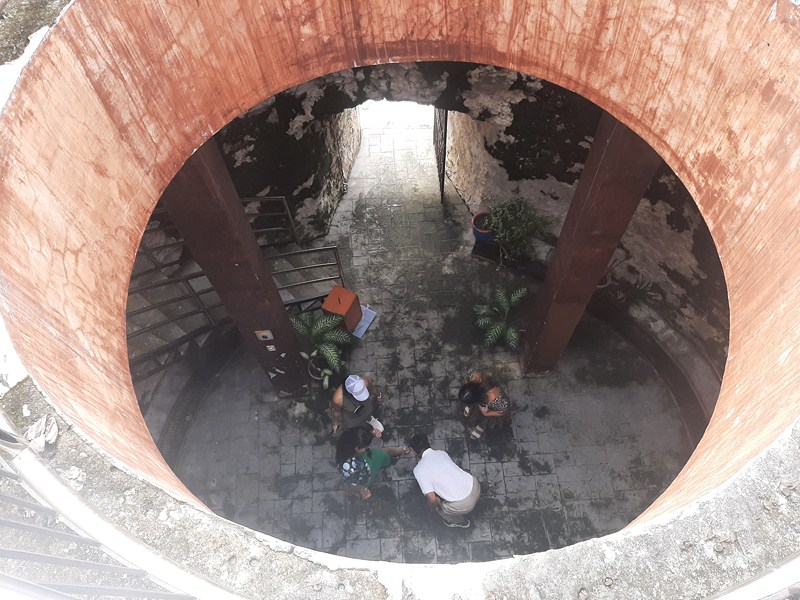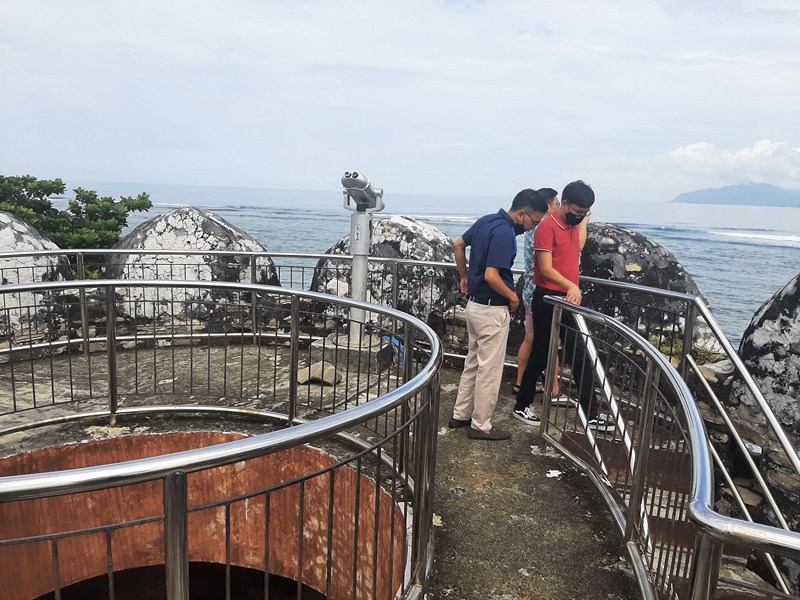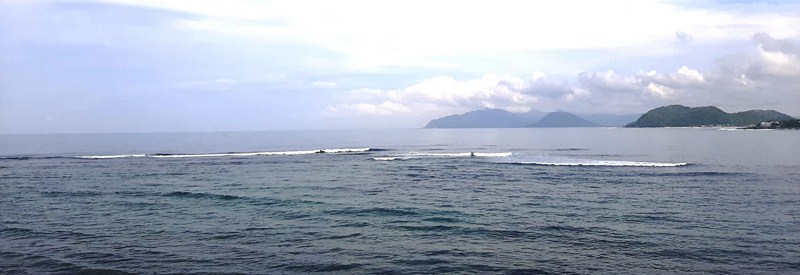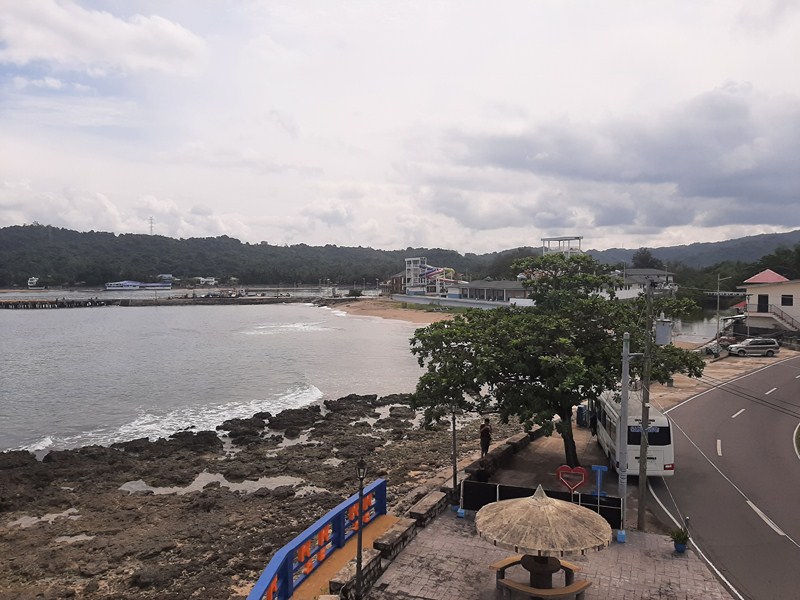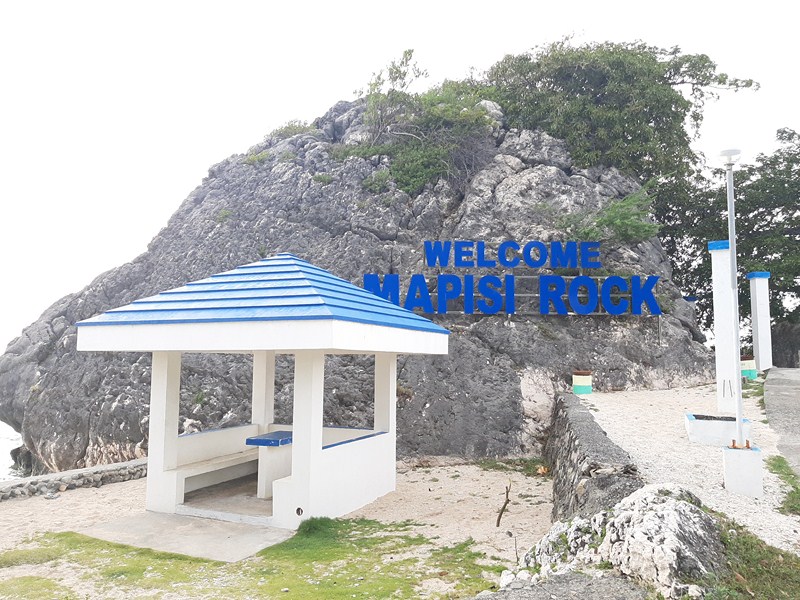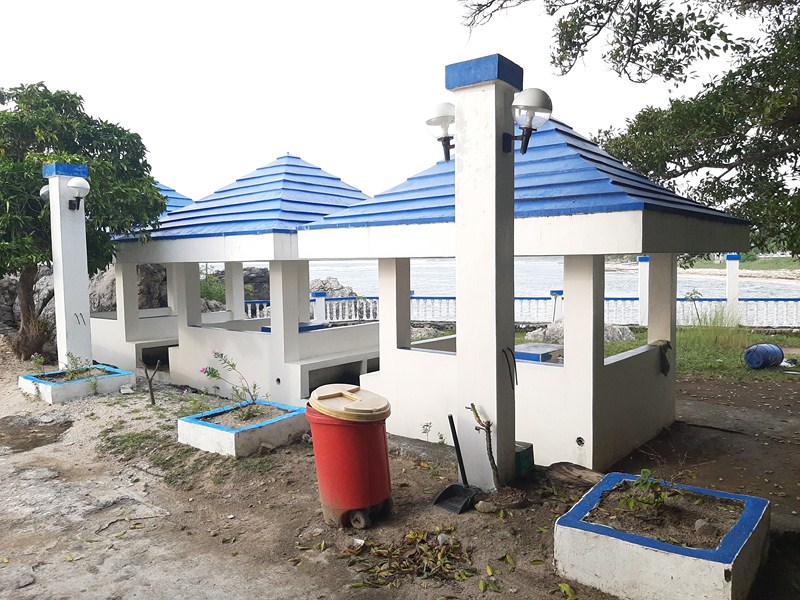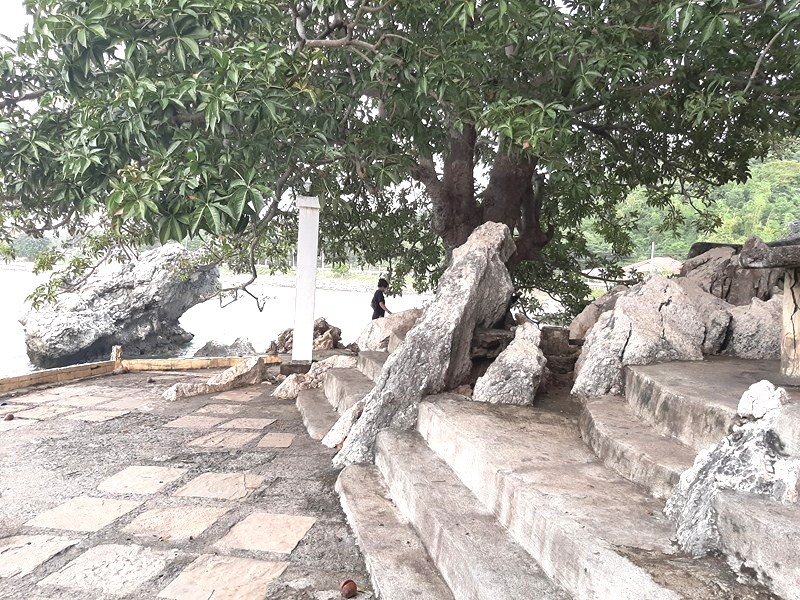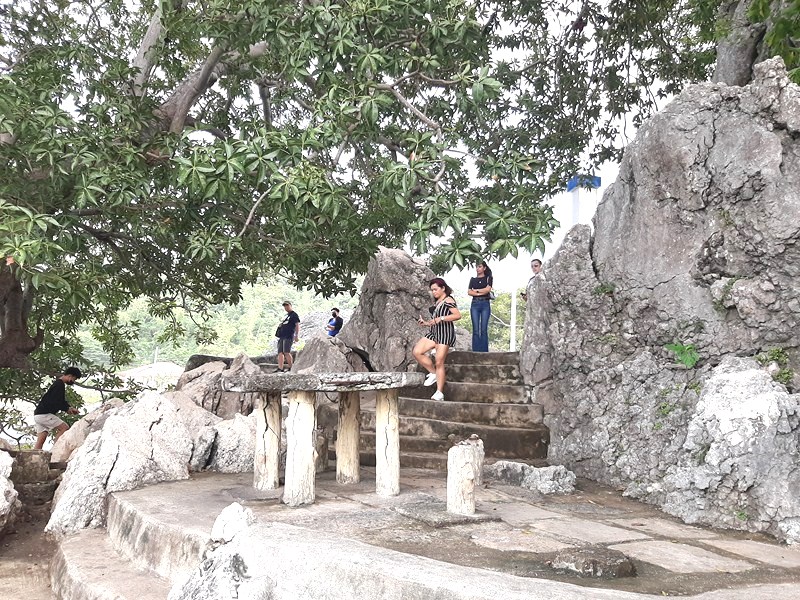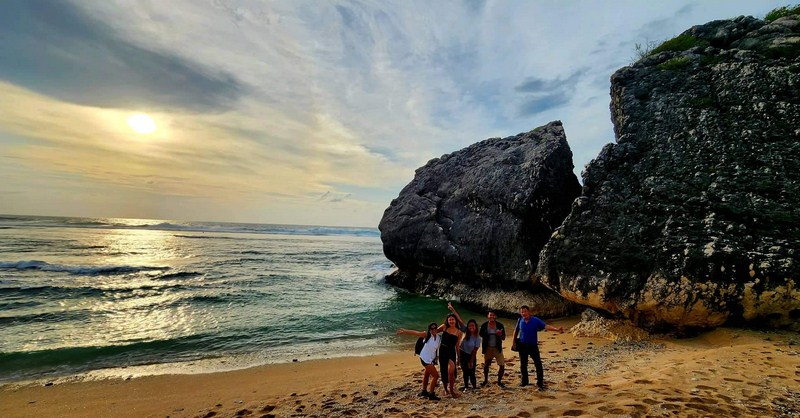Part of Sorsogon Countryside Tour
After our Whale Shark Interaction in Donsol, we again boarded our coaster for the 66.7-km. (1.5-hr.) drive to Sorsogon City, making a stopover at the relatively new, two-storey, Neo-Classical-style Museo Sorsogon within the Provincial Capitol Complex.
Check out “Whale Shark Interaction“
A brainchild of Gov. Francis Joseph “Chiz” G. Escudero, this two-storey museum is housed at the Old Sorsogon Provincial Jail. Built in 1916, the jail also hosted the Court of First Instance.
When a new penitentiary was built and the inmates were transferred in 2019, Escudero saw the potential of the vacated building and decided to showcase the province’s history, culture and heritage. The property was restored by the Department of Public Works and Highways.
The museum displays significant historical and cultural artifacts and memorabilia of the province, highlighting its early settlers and settlement, participation in the 1896 Philippine Revolution, status during the American Occupation and locally-made products. Relevant artifacts are still continuously collected.
The National Historical Commission of the Philippines (NHCP) managed the curatorial development of this new museum and also facilitated the loans of important artifacts from the National Museum of the Philippines.
The NHCP formally turned over the museum to the Sorsogon Provincial Government on March 12, 2021, during its inauguration and blessing. NHCP Chairman Rene R. Escalante presented the Certificate of Turn-over to Gov. Francis Joseph “Chiz” G. Escudero, and the latter spearheaded the unveiling ceremonies.The museum was blessed by Sorsogon Bishop Jose Alan V. Dialogo.
The inauguration was also attended by Deputy Speaker Evelina G. Escudero, National Museum of the Philippines Director-General Jeremy R. Barns, Sorsogon Vice Governor Manuel L. Fortes, Jr., Sorsogon City Mayor Ma. Ester E. Hamor, and other local government officials. Museo Sorsogon opened to the public on March 15, 2021
The museum houses ten galleries housed in what was once a prison cell, with the cell doors now glass paneled. The total area per floor is about 830 sq. m. Galleries 1 to 5 are located on the first floor of the building while Galleries 6 to 10 are located on the second floor.
At the museum foyer, we were welcomed by a sizable, wall-hung political map showing Sorsogon’s towns and two legislative districts.
Also on display in this area are the glass-framed copy of the Discreto Real (the document that established the province in 1894), a replica of a cannon recovered from the San Diego wreck site and a huge iron ship anchor recovered from the Donsol astillero.
Lining the ground floor hallway leading to the galleries are sequential portraits of former provincial governors of Sorsogon.
Gallery 1, called “Ang Lalawigan ng Sorsogon: Ang mga Bayan at Lungsod Nito” (The Province of Sorsogon: Its Municipalities and City), contains 5 displays.:
- Ang Pinagmula ng Pangalan ng Sorsogon (The Origin of the Name of Sorsogon)
- Heograpiya ng Sorsogon (The Geography of Sorsogon)
- Ang Klima at mga Importanteng Producto ng Sorsogon (Climate and Important Sorsogon Products)
- Populasyon ng Sorsogon (The Population of Sorsogon)
- Mga Wika ng Sorsogon (Sorsogon Languages) – the dialects the people speak
Gallery 2, called “Panahong Prehistoriko at Pagsisimula ng mga Pamayanan” (The Prehistoric Period and the Beginning of Communities), contains 4 displays:
- Ang mga Kuweba ng Bato (The Caves of Bato)
- Ang Libingan sa Pilar (The Cemetery of Pilar)
- Ang Pagsisimula ng mga Sinaunang Pamayanan (The Beginning of Early Settlements)
- Mga Alamat ng Lawa ng Bulusan (Legends of Lake Bulusan)
Gallery 3, called “Sorsogon noong Panahon ng mga Espanyol” (Sorsogon during the Spanish Period), contains 10 displays that narrates how the Spanish regime shaped Sorsgon:
- Ang Misa sa Gibal-ong (Gibalon) Magallanes (The Mass of Gibalon, Magallanes)
- Ang Misyon ng mga Pransiskano sa Sorsogon (The Franciscan Mission in Sorsogon)
- Erecciones de Pueblos y Parroquias: Pagtatatag ng mga Bayan noong ika-17 Daantaon (The Establishment of Towns and Parishes During the 17th Century)
- Pag-aalsa sa Sorsogon (Uprising in Sorsogon)
- Astilleros: Ang Halaga ng Sorsogon sa Kalakhang Galyon (The Importance of Sorsogon in the Galleon Trade)
- Ang mga Pagsalakay ng mga Pirata sa Sorsogon (The Pirate Attacks in Sorsogon)
- Baluartes, Estacadas y Castillos: Ang mga Tanggulan at Moog sa Sorsogon (Bastions, Stockades and Castles: The Forts and Towers in Sorsogon)
- Ang mga Bahay-na-Bato ng Sorsogon (The Stone Houses of Sorsogon)
- Mga Tradisyong Relihiyoso sa ibat-ibang Bayan ng Sorsogon (Religious Traditions in the Different Towns of Sorsogon)
- Ang Espesyal na Debosyon kay Ina, Nuestra Señora de Peñafrancia sa Sorsogon (The Special Devotion to our Mother, Our Lady of Peñafrancia of Sorsogon).
Gallery 4, called “Rebolusyon sa Sorsogon” (Sorsogon Revolution), contains 3 displays that narrates the Philippine Revolution that unfolded at the province at the tail end of their 333 year rule:
- Kronolohiya ng mga Kaganapan (Chronology of Events)
- Si Obispo Jorge Barlin sa Sorsogon (Bishop Jorge Barlin of Sorsogon)
- Ang mga “Pulahanes” sa Sorsogon (The “Pulahanes” of Sorsogon).
Gallery 5, called “Sorsogon sa Pananakop ng mga Amerikano” (Sorsogon During the American Occupation), contains 8 displays that narrates the early armed resistance against the Americans and the progress brought about by these eventual colonizers up to the time of the Philippine Commonwealth Government:
- Pagdating ng mga Amerikano (The Arrival of the Americans)
- Ang mga “Amerikanistas” at mga Anti-Amerikano; Ang Pagkilos ni Lt. Col. Emeterio Funes (The “Amerikanistas” and the Anti-Americans: The Action of Lt. Col. Emeterio Funes)
- Pagtatanggol ng Donsol Laban sa mga Amerikano (Donsol’s Defense Against the Americans)
- Mga Gurong Amerikano (Thomasites) at ang Pampublikong Edukasyon sa Sorsogon (The American Teachers (Thomasites) and Public Education in Sorsogon)
- Larawan ng Bagong Kaayusan (A Portrait of the New Order)
- Pampublikong Istraktura (Public Structures)
- Pagsupil sa Kolera (Cholera Control)
- Sa Ilalim ng Pamahalaang Komonwelt (Under the Commonwealth Government)
Gallery 6, called “Sorsogon sa Pananakop ng mga Hapon” (Sorsogon During the Japanese Occupation), contains 7 displays: Here, we learn about Bicolano heroes such as Wenceslao Vinzons (of Camarines Norte) and Salvador Escudero who both commanded guerilla units.
- Ang Ikalawang Digmaang Pandaigdig at ang Pananakop ng Sorsogon (The Second World War and the Conquest of Sorsogon)
- Mga Gerilla ng Sorsogon: Ang Gerilla Yunit ni Lapus (Sorsogon Guerillas: The Guerilla Unit of Lapus)
- Mga Gerilla ng Sorsogon: Ang Gerilla Yunit ni Escudero (Sorsogon Guerillas: The Guerilla Unit of Escudero)
- Ang mga War Tunnel ng Bulan (The War Tunnels of Bulan)
- Ang Masaker ng mga Tsino ng Bulan (The Massacre of the Chinese of Bulan)
- Ang Pagtatapos ng Digmaan (The End of the War)
- Mga Bayaning Gerilya ng Sorsogon (Guerilla Heroes of Sorsogon)
Here, a bartolina (solitary confinement cell) displays some restored weapons used during the guerilla period
Gallery 7, called “Pagbangon at Pag-unlad” (Rise and Development), contains 3 displays that narrates Sorsogon’s road to recovery from damages during the war, the disasters that Sorsogon had to endure (catstrophic storms, eruptions of Mount Bulusan) and famous Sorsoganons who displayed their heroic mettle during the Martial Law years including Lilosa Hilao, the 23-year old student journalist who was arrested, raped and viciously tortured then killed (the first detainee to be killed during that time):
- Mga Anak ng Sorsogon sa Panahon ng Batas Militar hanggang sa People Power (Sorsogueños During Martial Law Until People Power)
- Mga Mapaminsalang Bagyo (Destructive Typhoons)
- Mga Aktibidad bg Bulkang Bulusan (The Activities of Mount Bulusan)
Gallery 8, called “Mga Industriya ng Sorsogon” (Sorsogon Industries), showcases Sorsogon’s main industries. On display are decorative and utilitarian items made from niyog (mature coconut), pili (pili nut) and abaka (abaca) plus some tools produced by the blacksmiths (panday),of Sorsogon.
The gallery also displays the mural of Lady Justice (Justitia), painted by a certain V. L. Jesalva, and restored by the National Historical Commission of the Philippines (NHCP).
Gallery 9, called “Pantomina sa Tinampo (Sorsogon’s traditional love and courtship dance), exhibits 2 events:
- Kasanggayahan Festival
- Pantomina sa Tinampo (Traditional Courtship Folk Dance, Guinness World Record Title Holder 2019)
During the province’s 125th anniversary celebration on October 31, 2019, Sorsogon bagged the Guinness World Record for the “Largest Filipino Folk Dance” when 7,127 participants from all over the province performed the Pantomina along the Rompeoplas Baywalk.
Gallery 10, called “Mga Pook Pasyalan sa Sorsogon,” contains 4 displays that feature replicas and stories behind Sorsogon’s natural and historical tourist gems:
- Isla, Dagat, Dalampasigan (Island, Sea, and Beach)
- Anyaya ng Inang Kalikasan (Invitation of Mother Nature)
- Paglalakbay na Makasaysayan (Historical Journey)
- Mayamang Kultura at Pananampalataya (Rich Culture and Faith)
The yard, at the back of the museum, was converted into an 875-sq.m. open-air amphitheater. Now a venue for events and stage performances, it has a six-tier seating area.
At the back of the museum, within the corners of the amphitheater, are the Kape-Terya (Cafeteria) and the Kape-Tolyo (coffee shop). The former offers local snacks while the latter offers both hot and cold coffee to museum visitors.
The Souvenir Shop, located at the entrance of the museum, displays “made in Sorsogon” products of micro, small and medium enterprises such as snacks, beauty products made from pili, handicrafts and accessories, all sold with no price mark-up.
A staircase wall also features the original artworks of the provincial jail inmates including a Sigue-Sigue Sputnik gang’s rendition of the portrait of Cuban revolutionary Ernesto “Che” Guevara.
Museo Sorsogon: Brgy. 1, Burabod, Provincial Capitol Compound, Sorsogon City. Mobile number: (0912)-236-6422. E-mail: museo@sorsogon.gov.ph. Facebook: https://www.facebook.com/MuseoSorsogon. Open Tuesdays to Sundays, 8:30 AM -12 noon and 1:00-5:30 PM.
How to Get There: Sorsogon City is located 517.5 kms. (a 12–hr. drive) from Manila via the Pan-Philippine Highway/AH26.
Sorsogon Provincial Tourism Culture and Arts Office: Ground Floor, Capitol Building, 4700 Sorsogon City. Mobile number: (0968) 624-6279. E-mail: tourism@sorsogon.gov.ph
Ur Place Travel & Tours: OLV Pangpang, Sorsogon City, Sorsogon. Mobile number (Viber): (0927) 950-3927 (Ms. Annie Gueb). Facebook: www.facebook.com/urplacetravel

